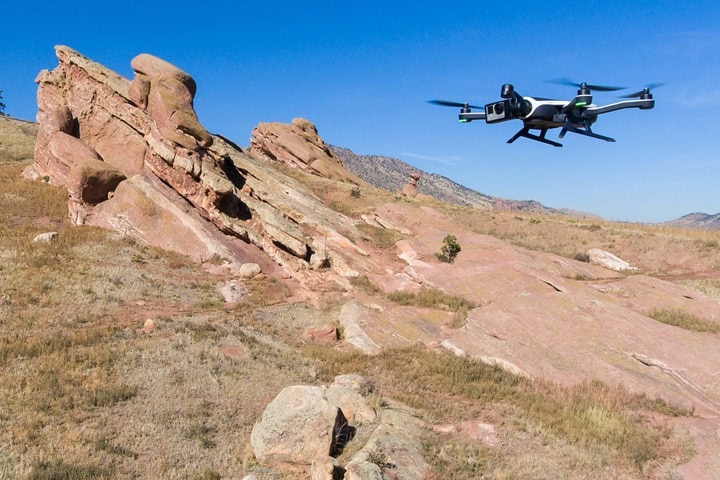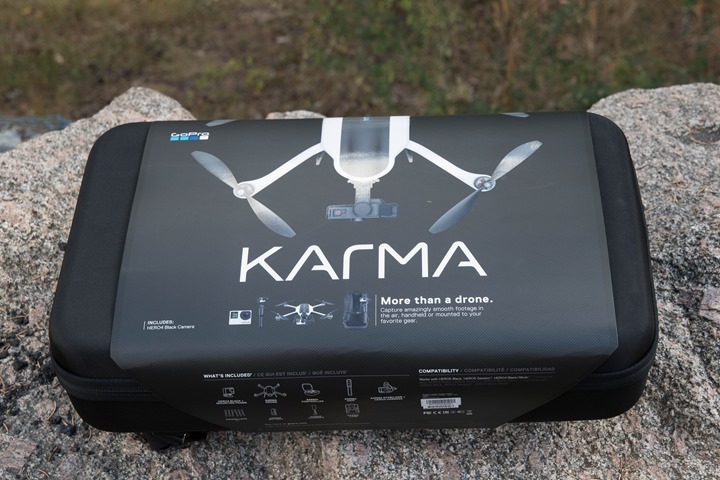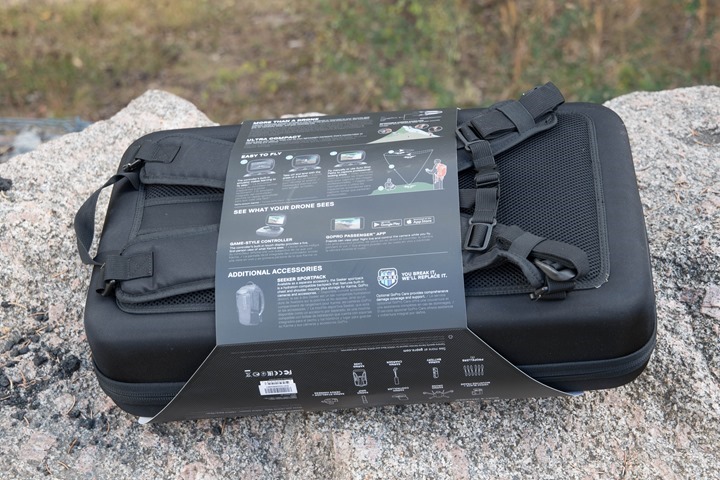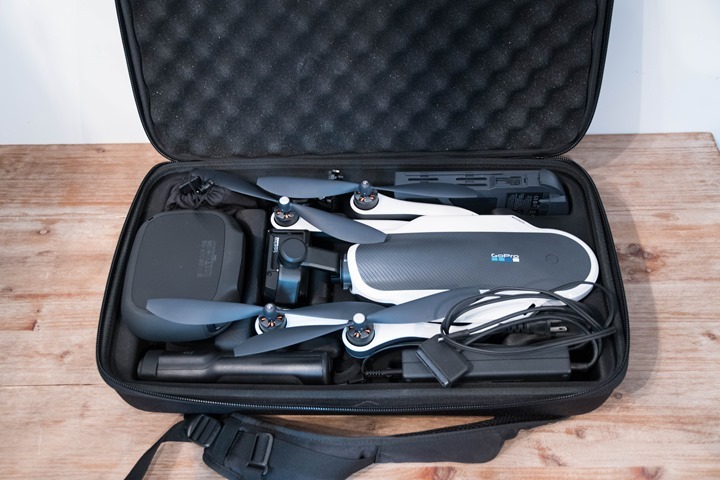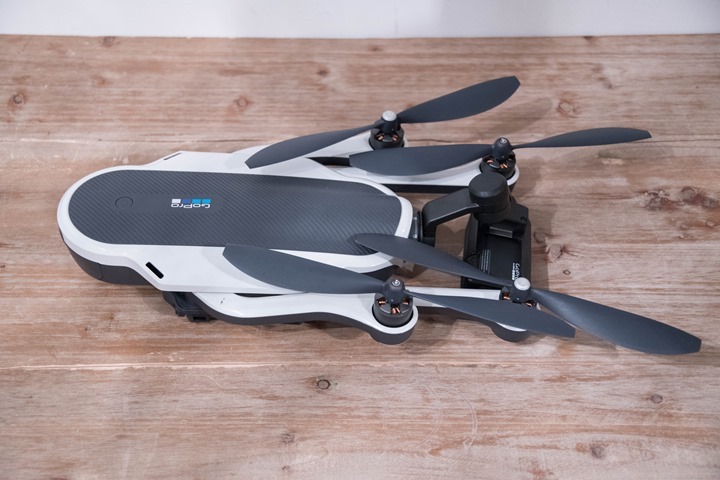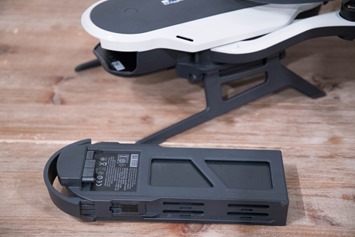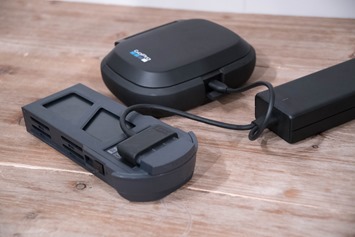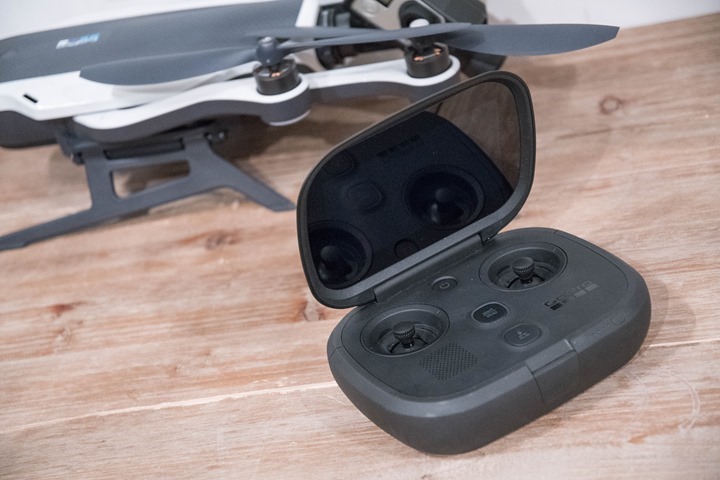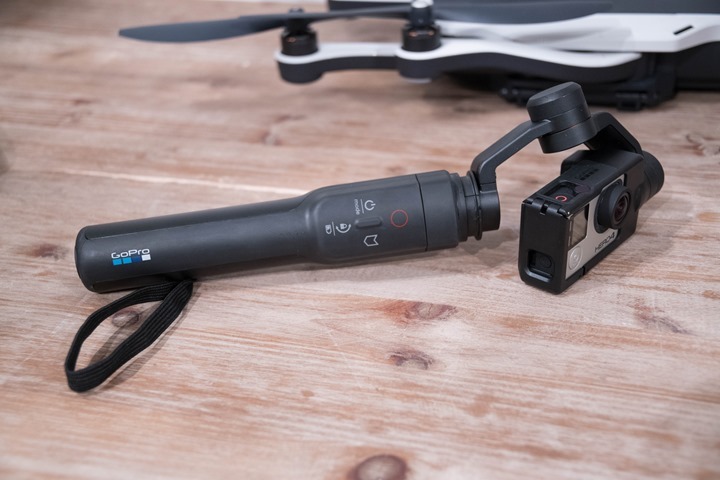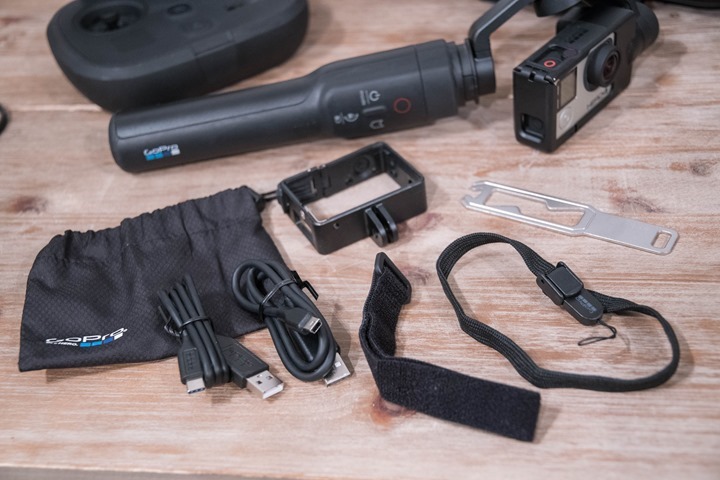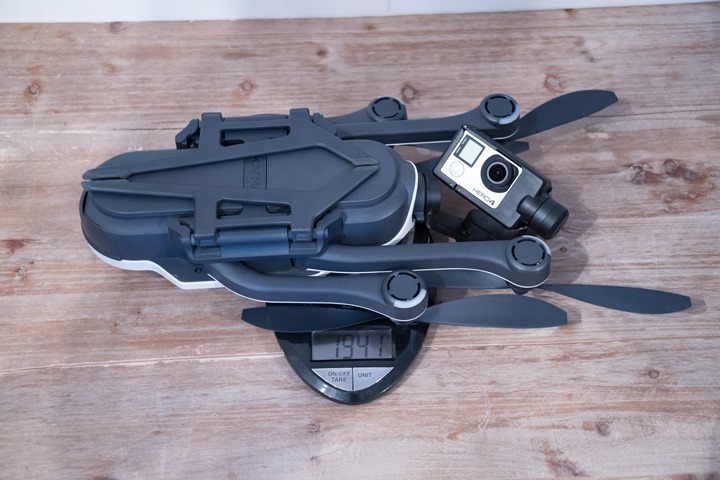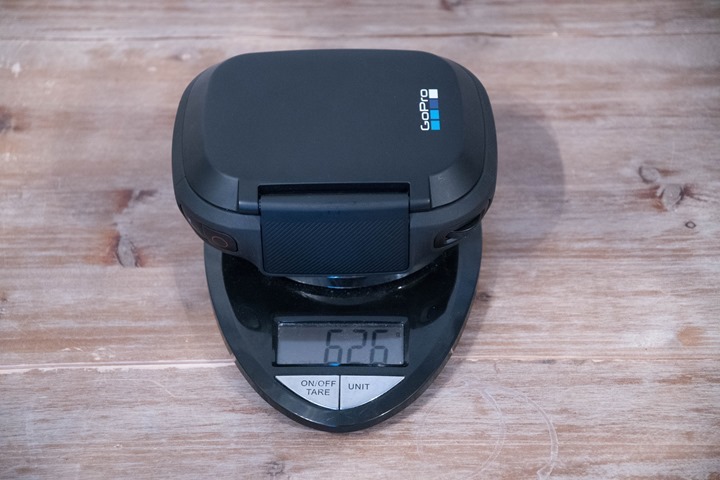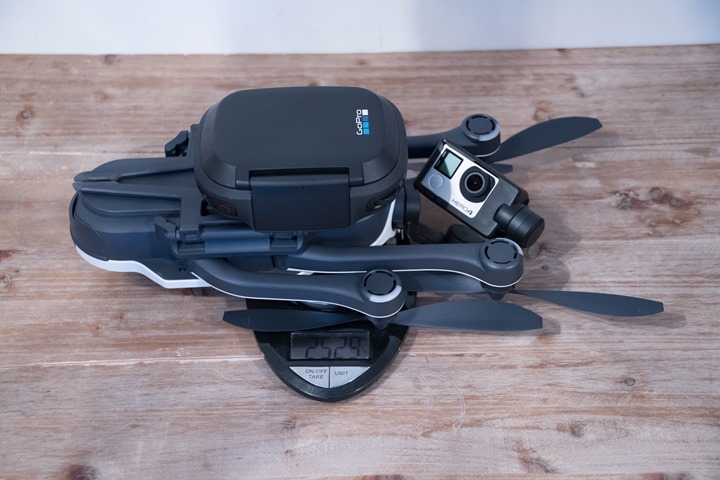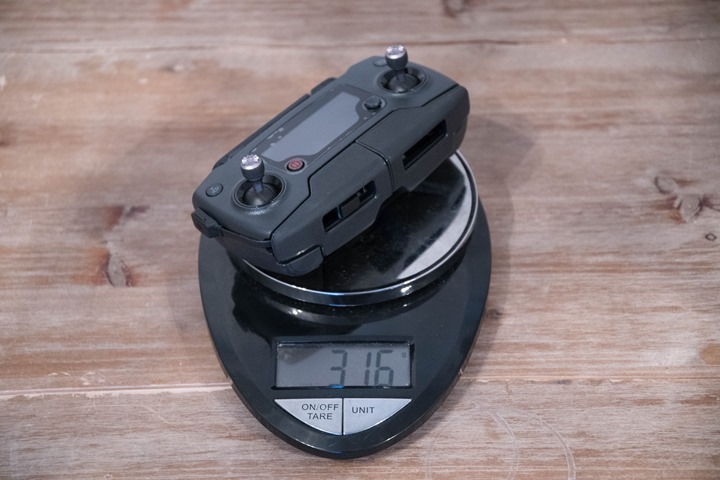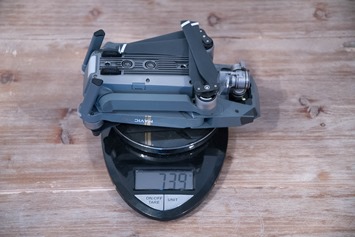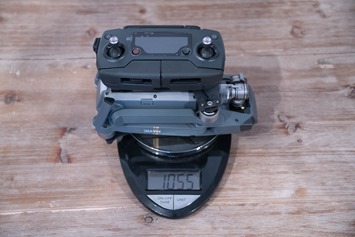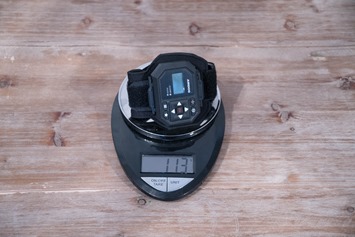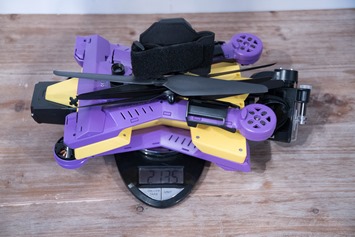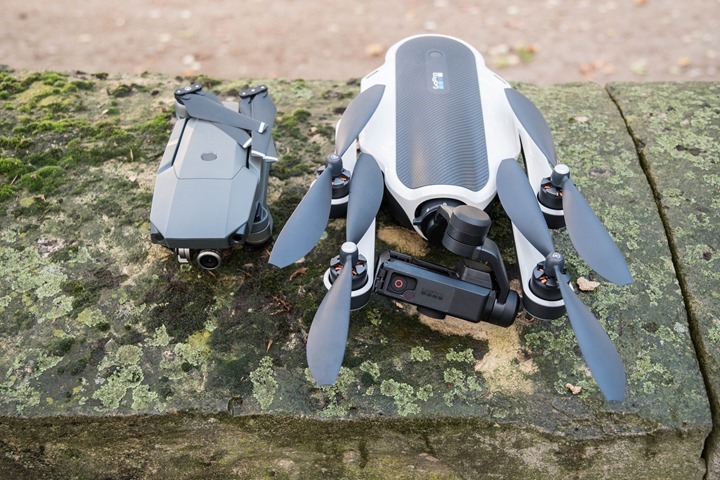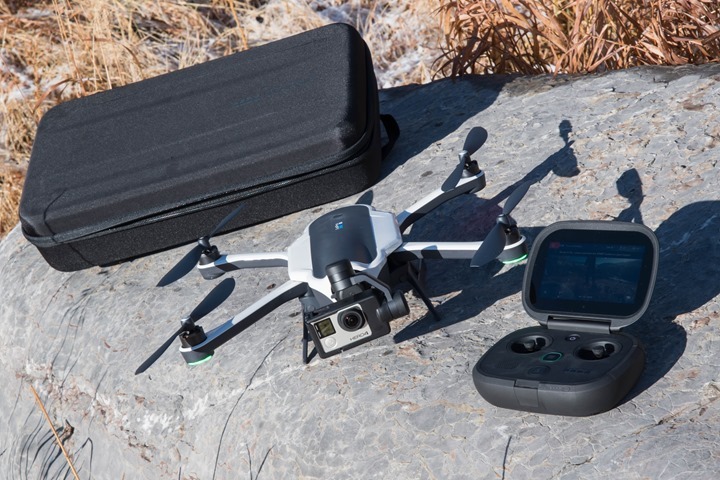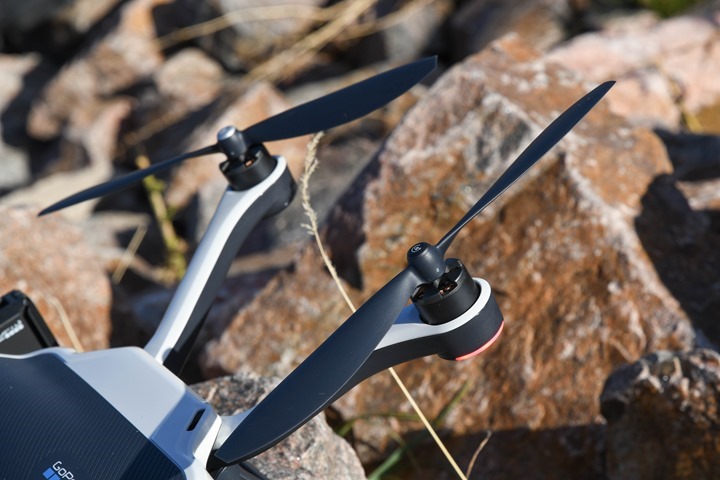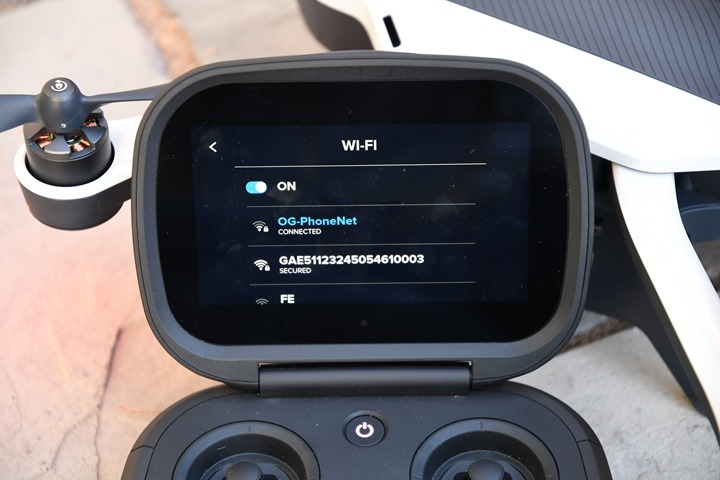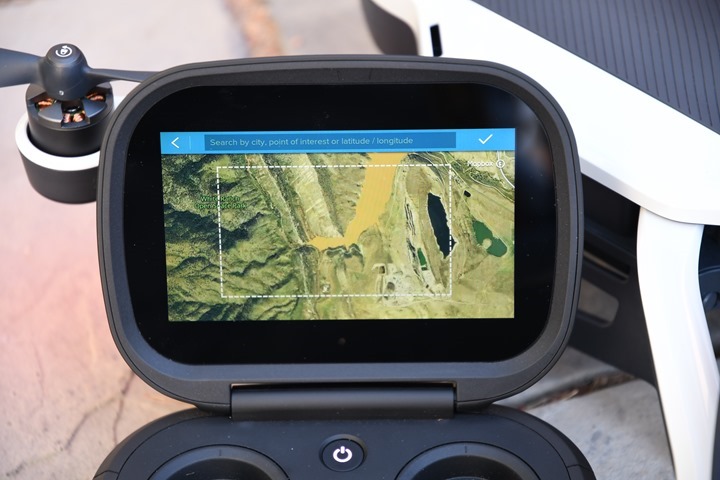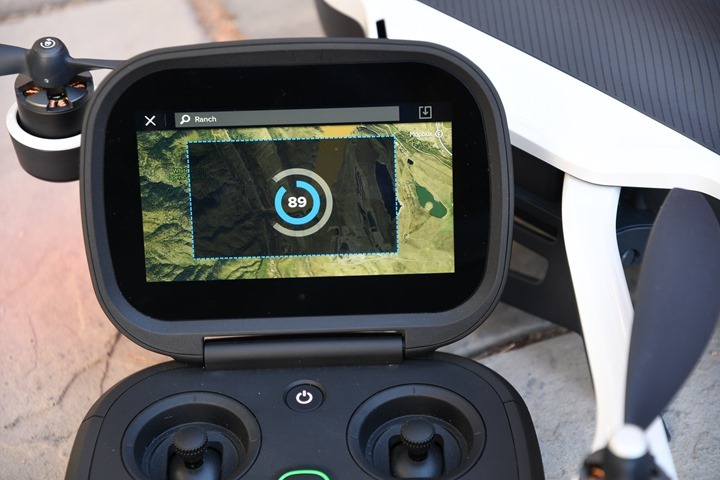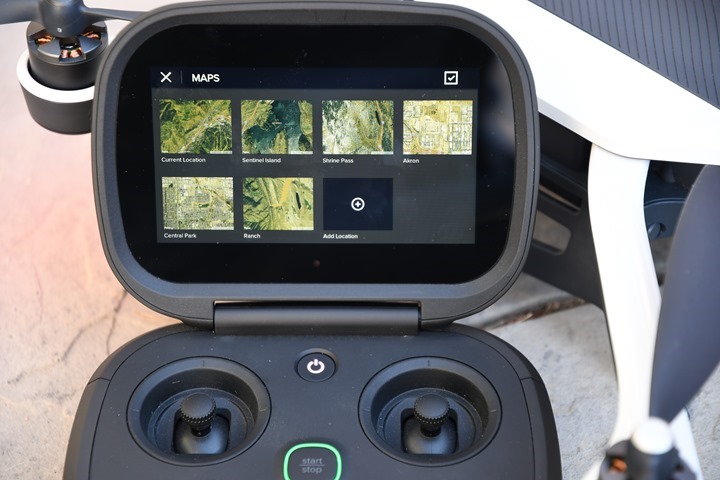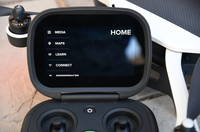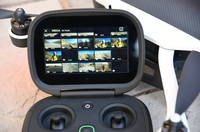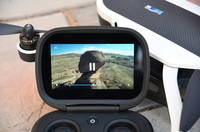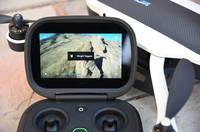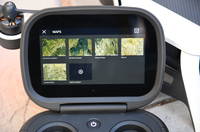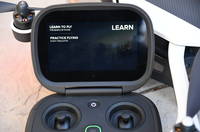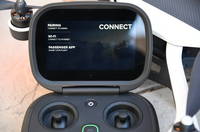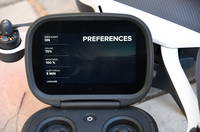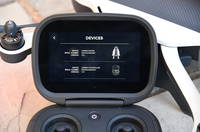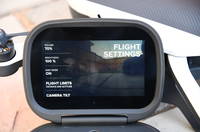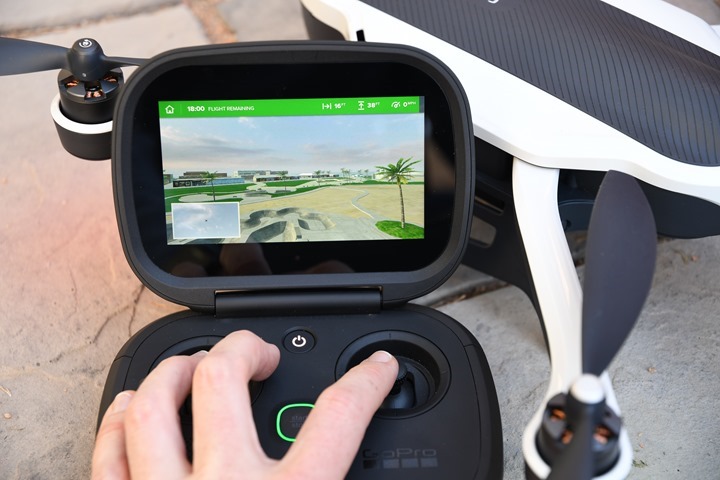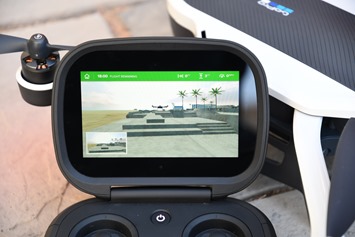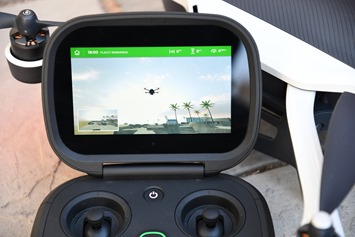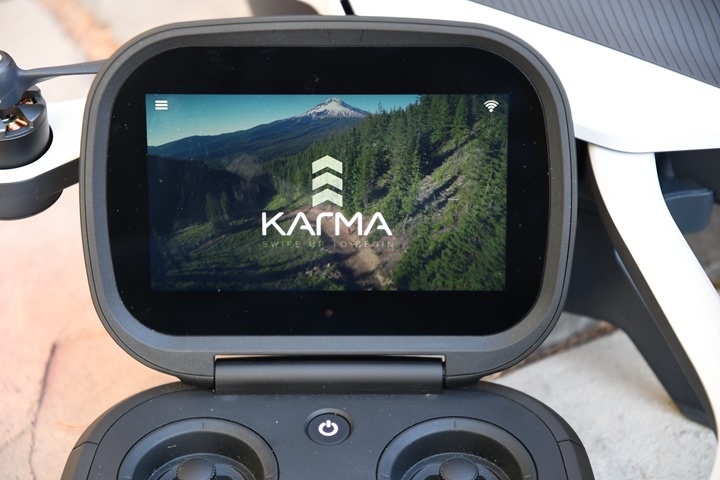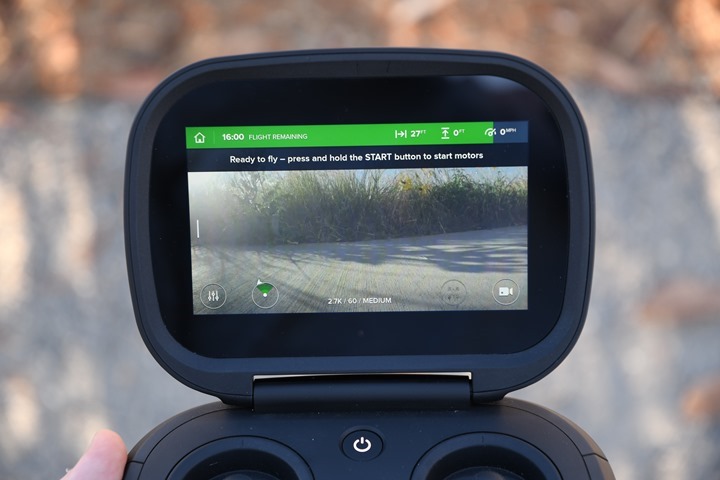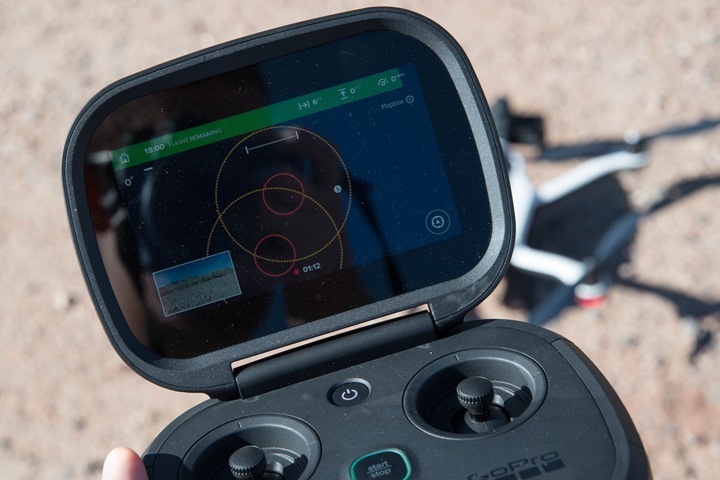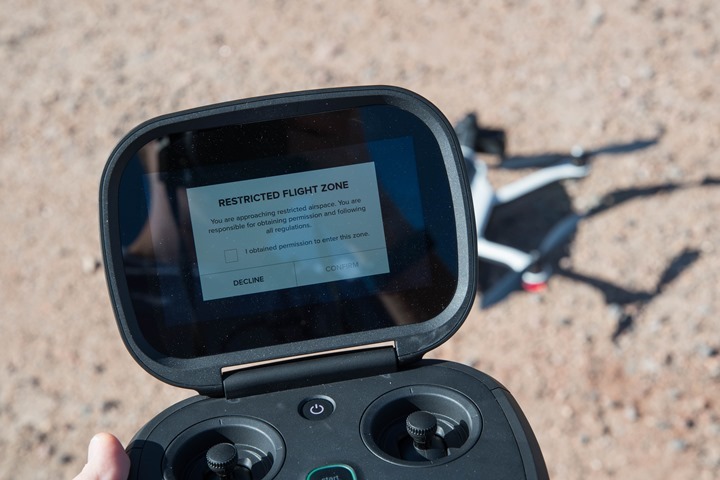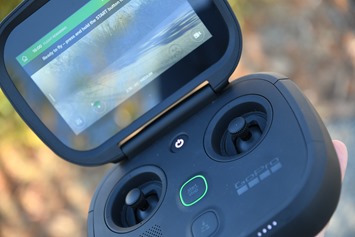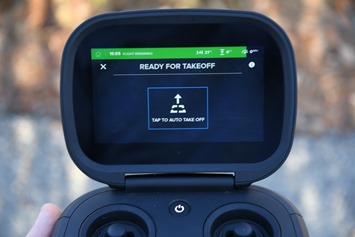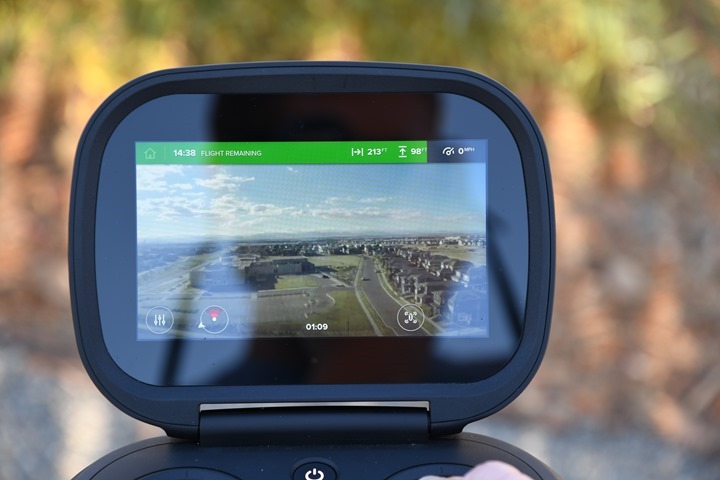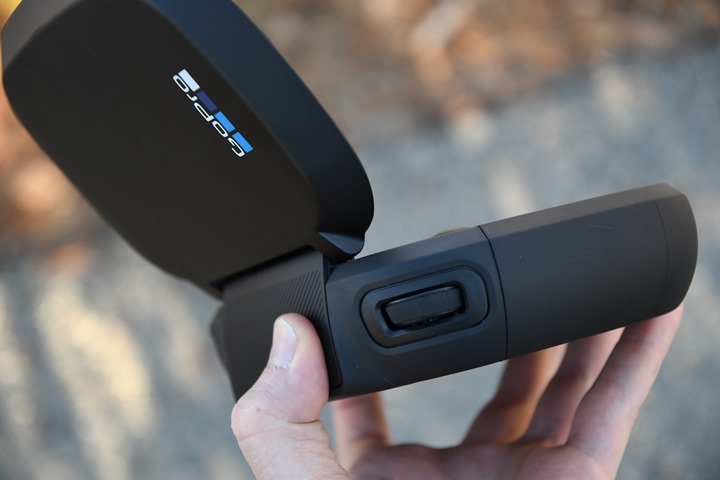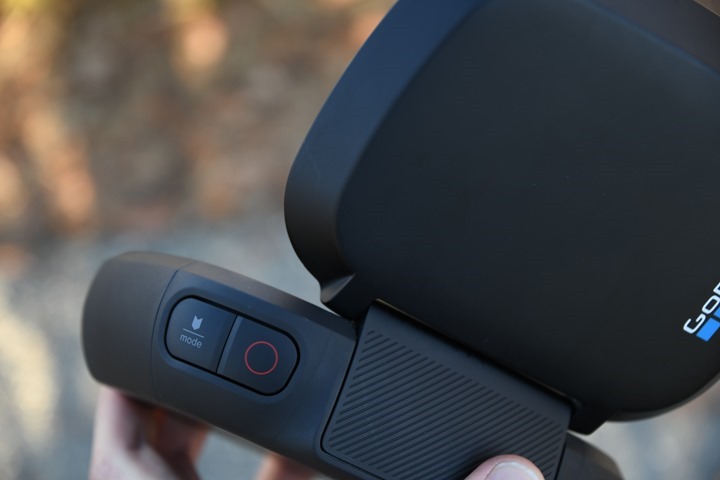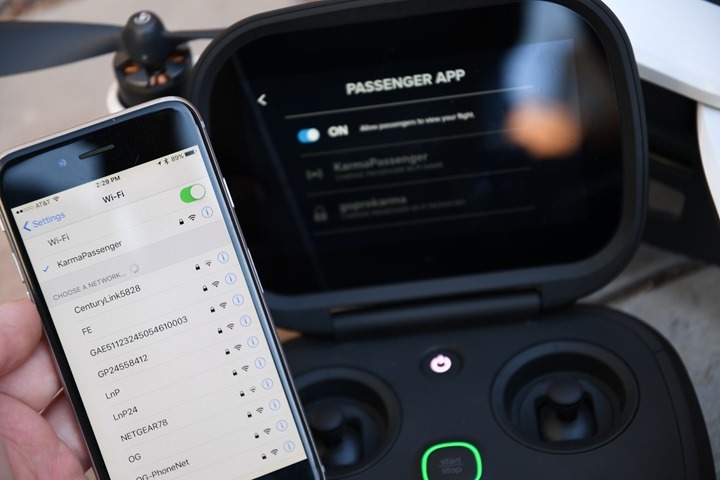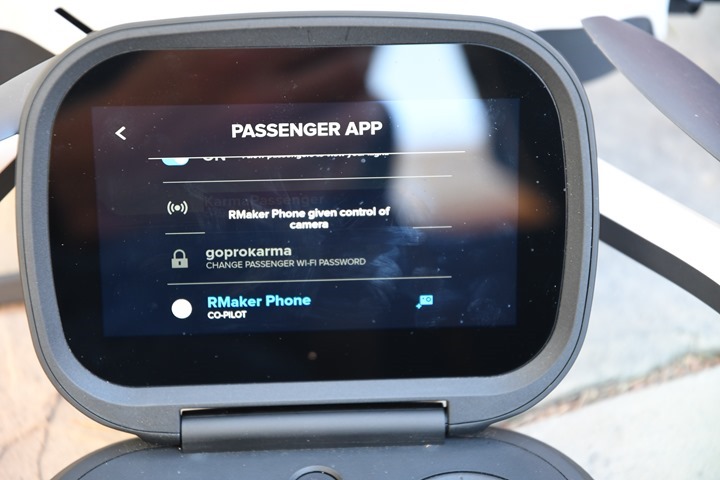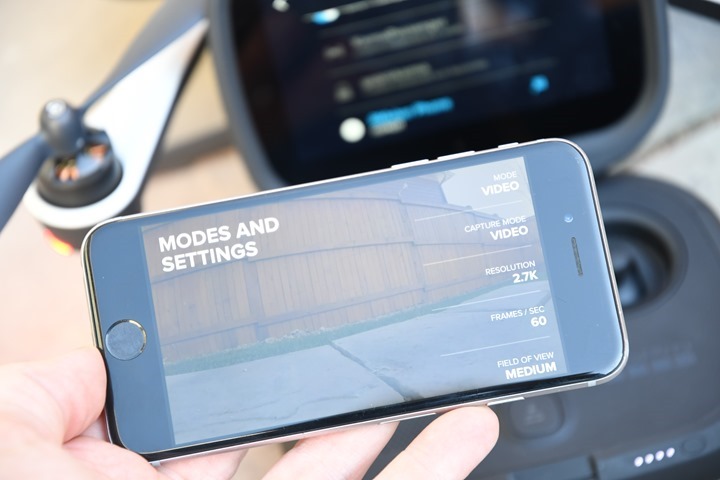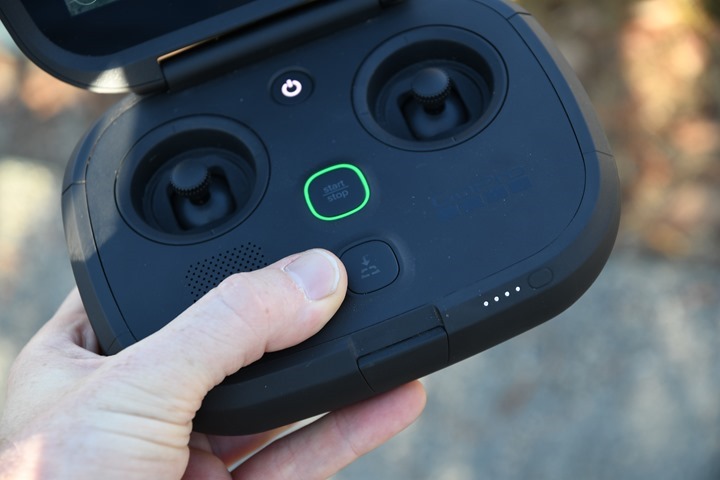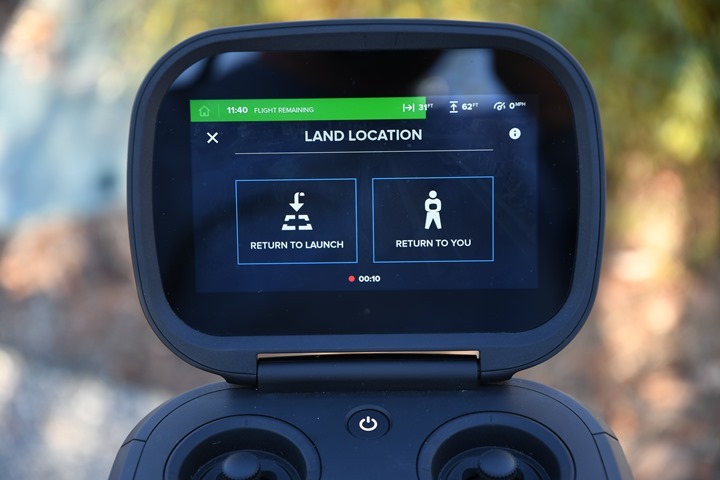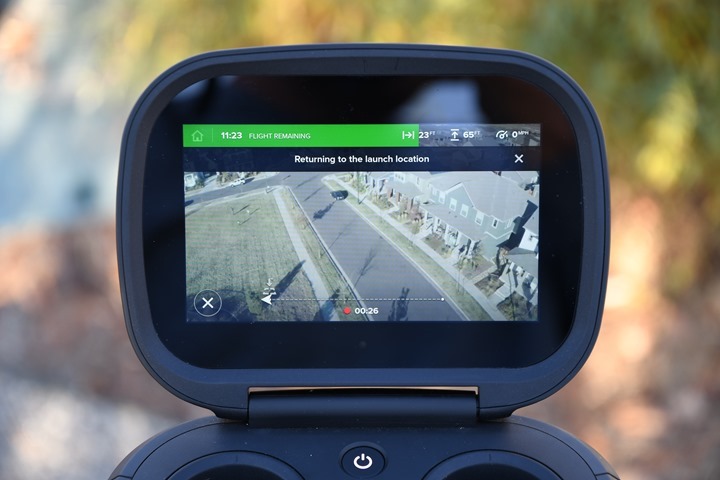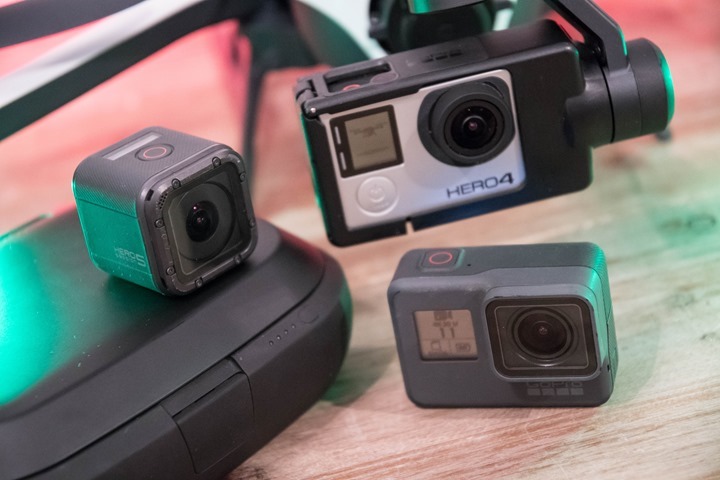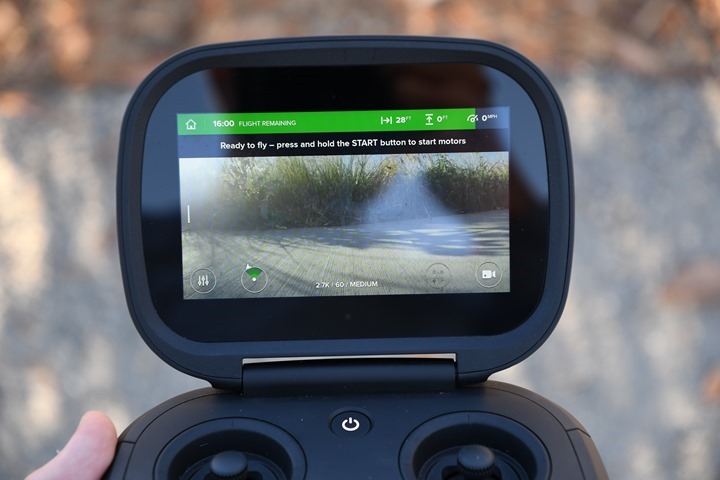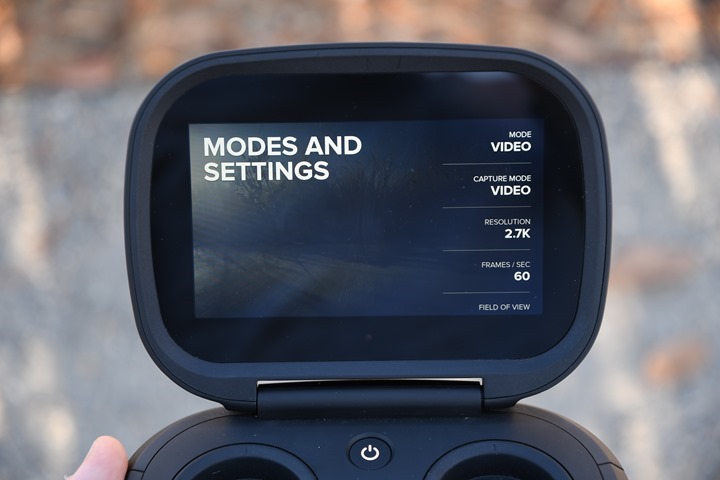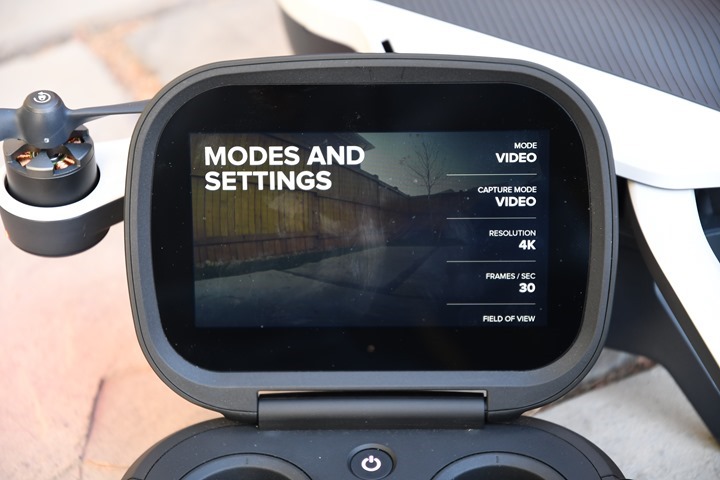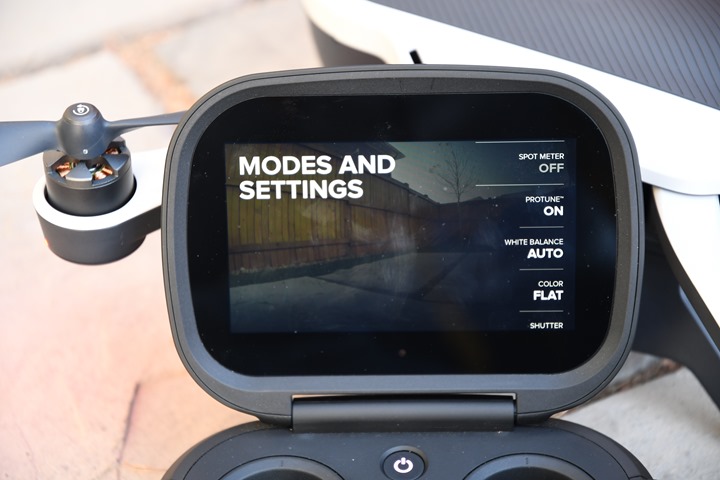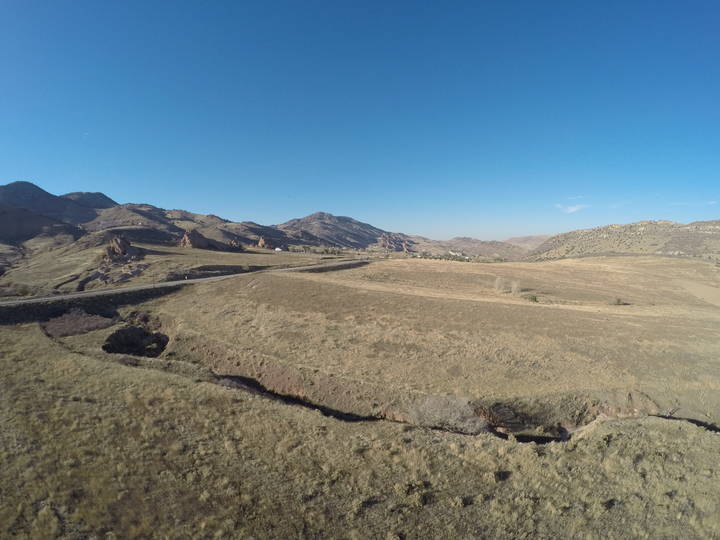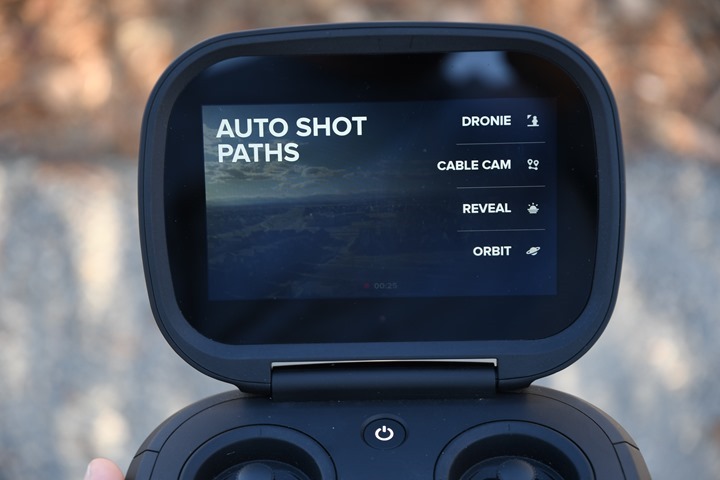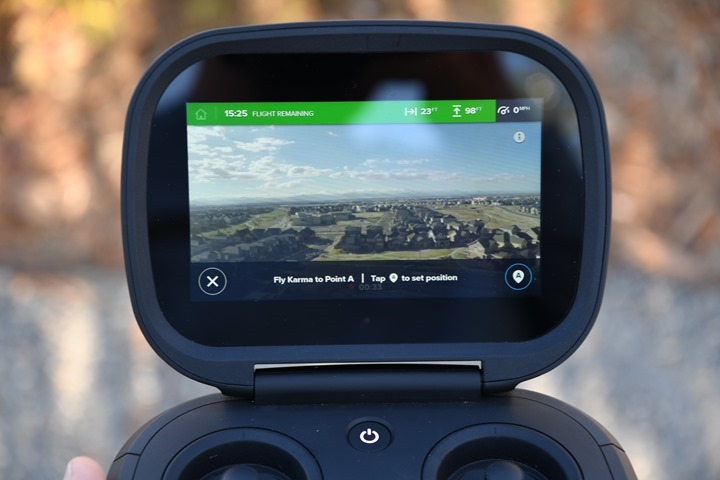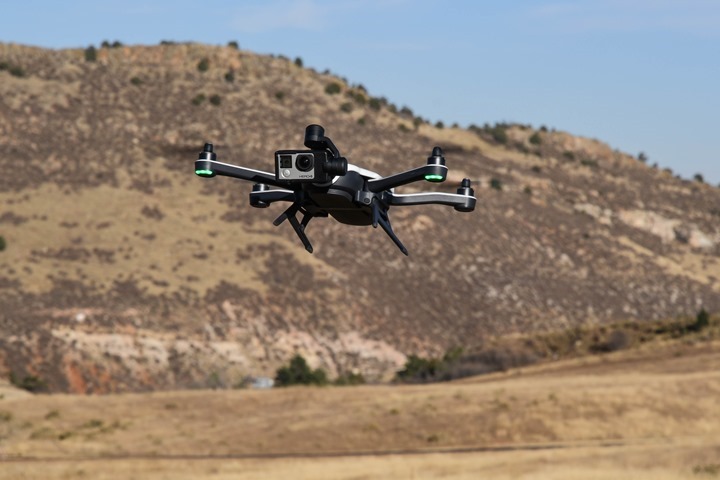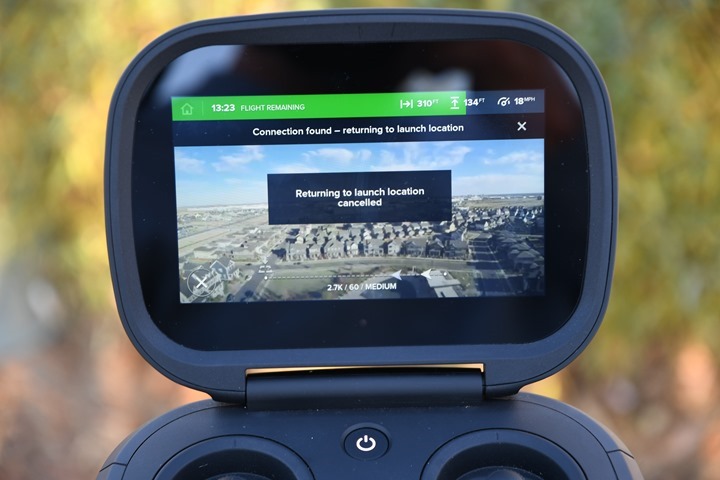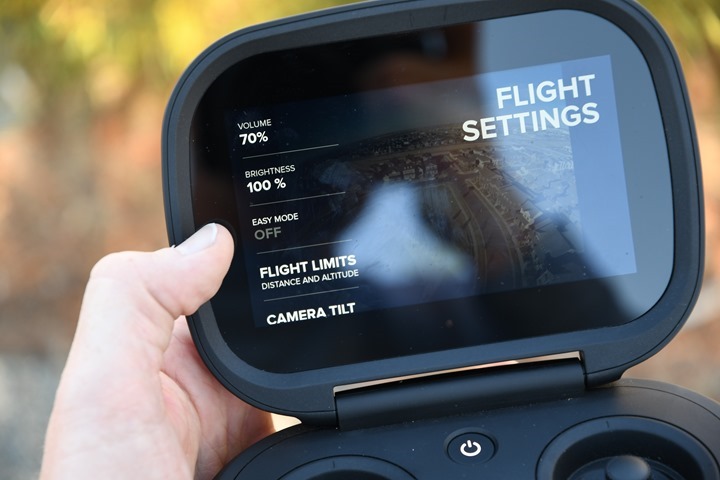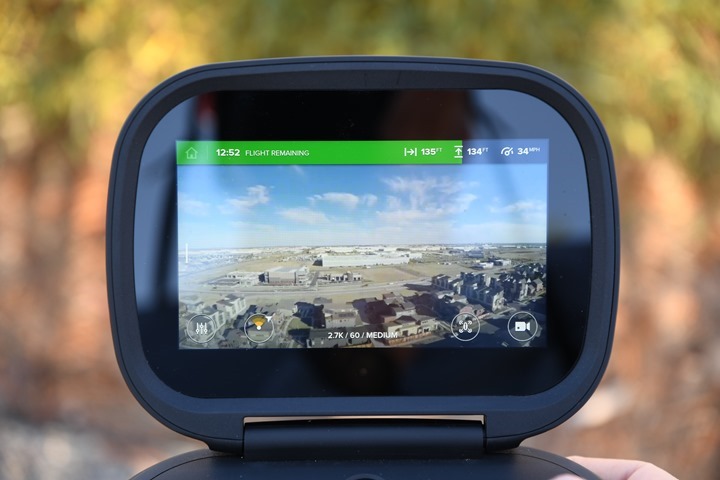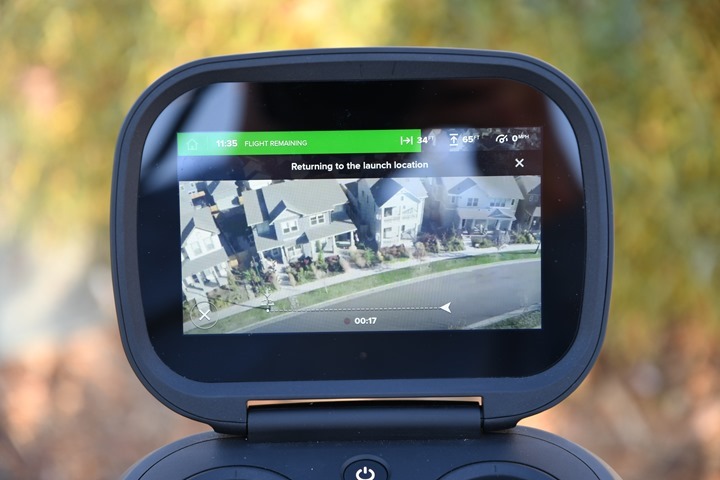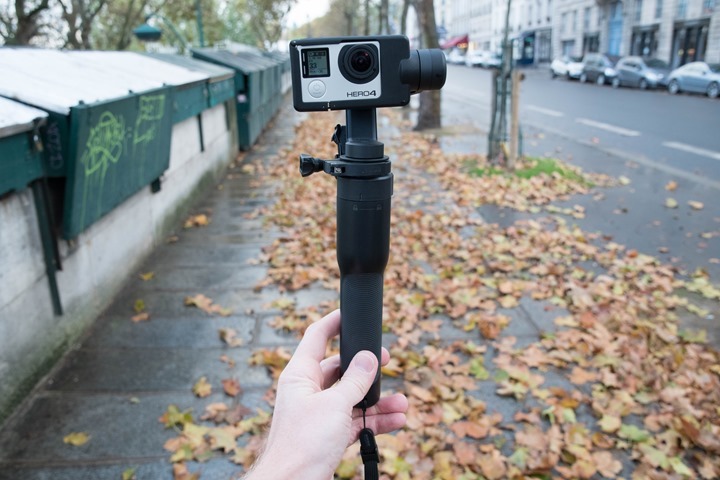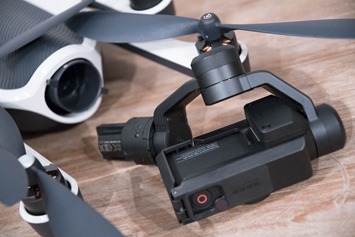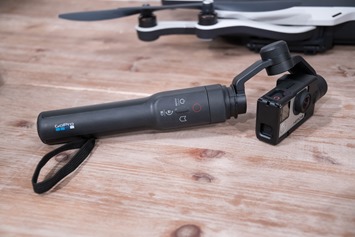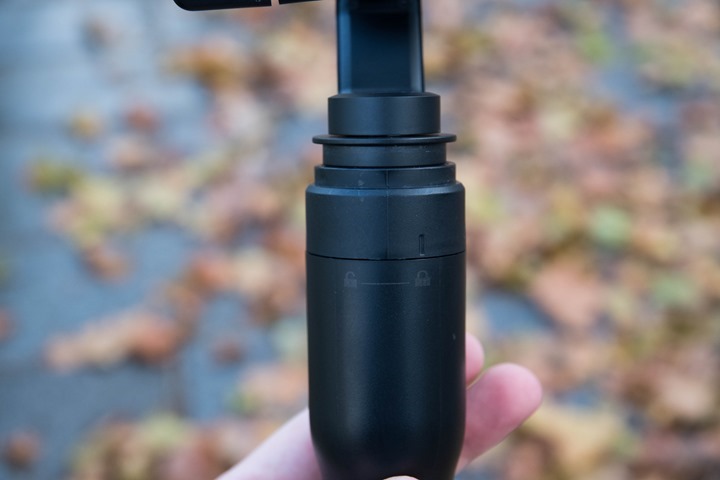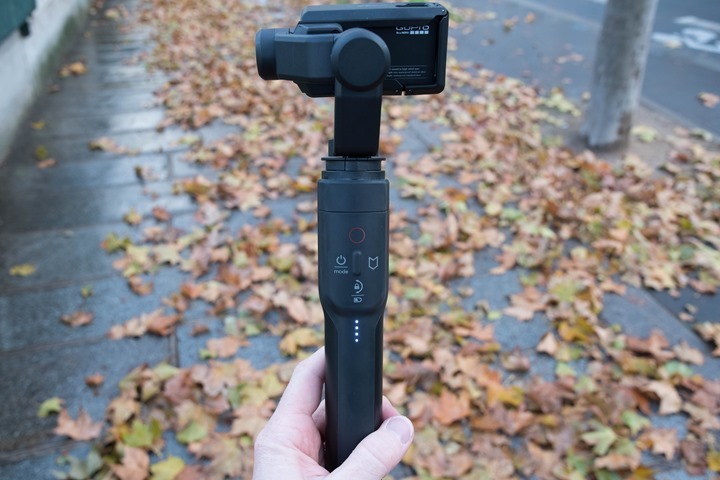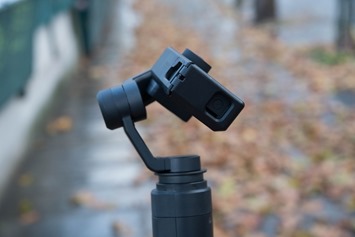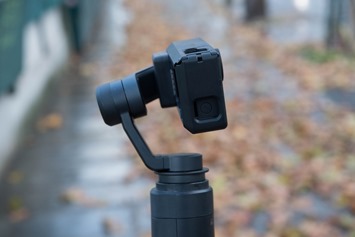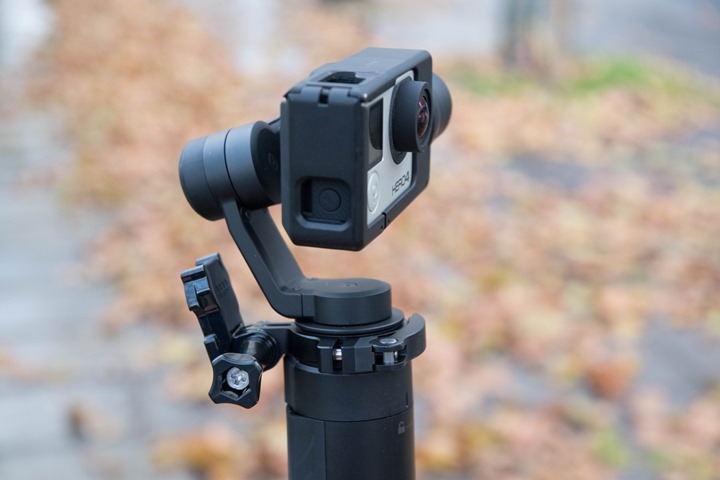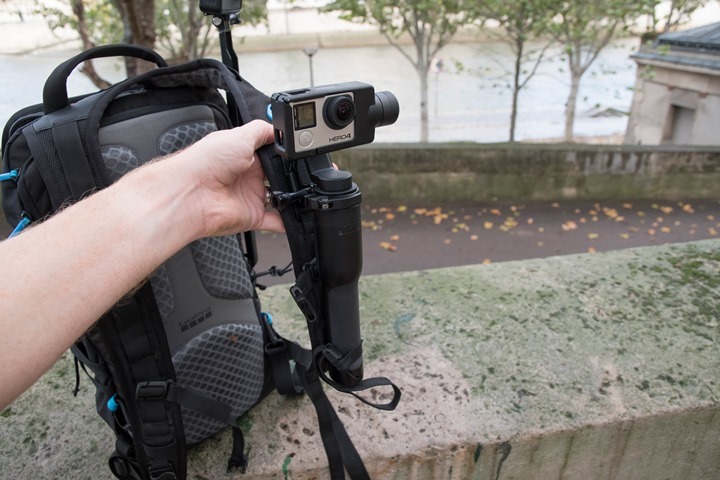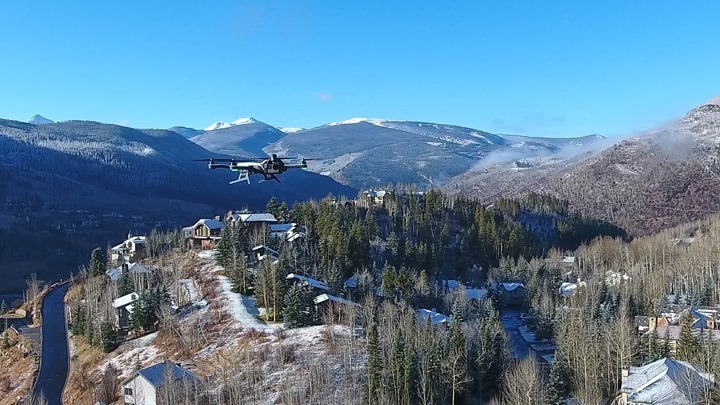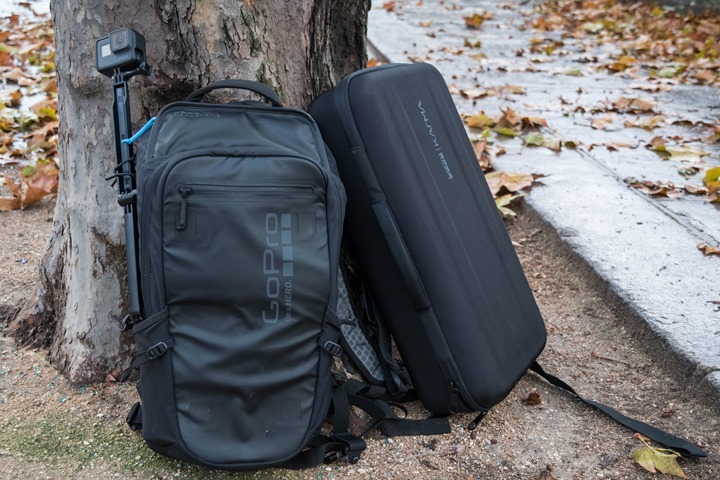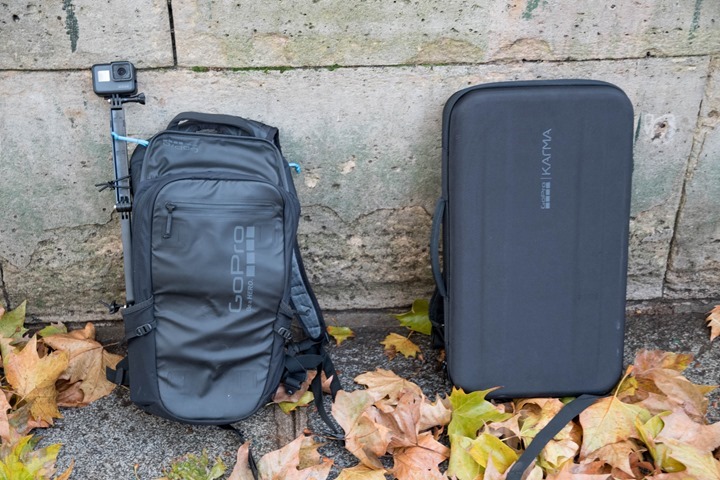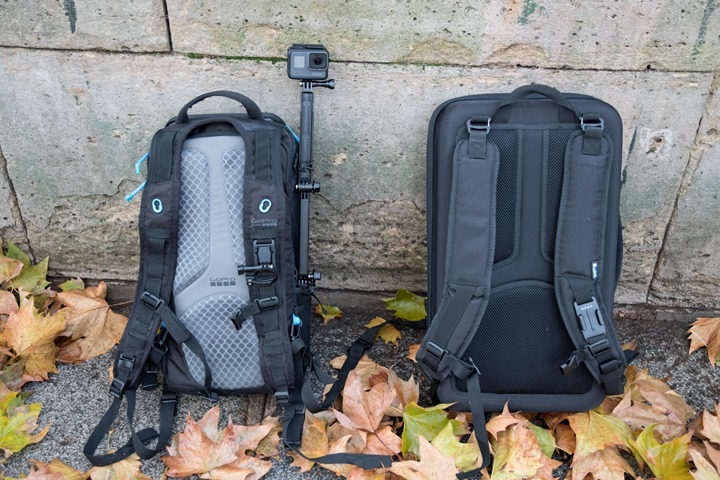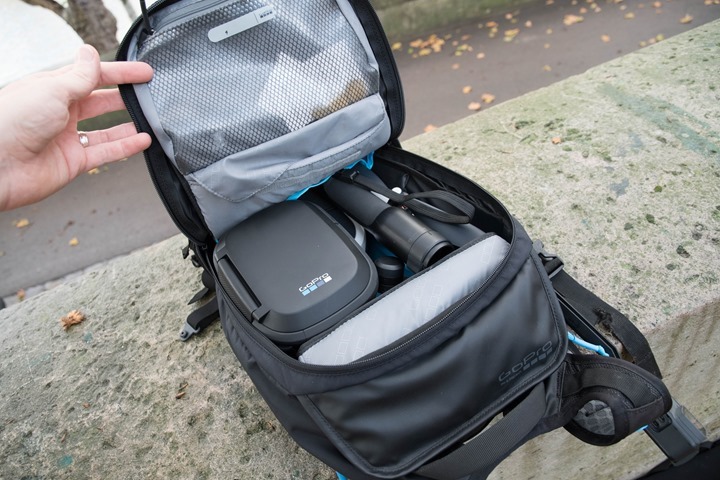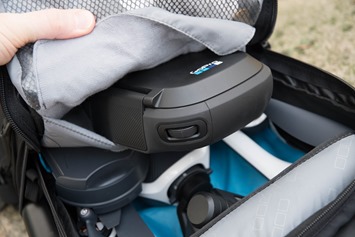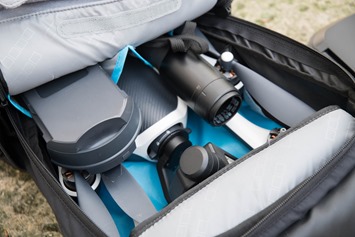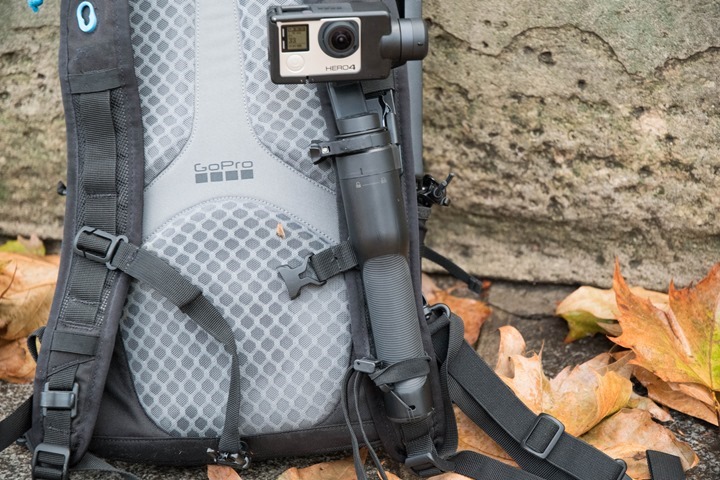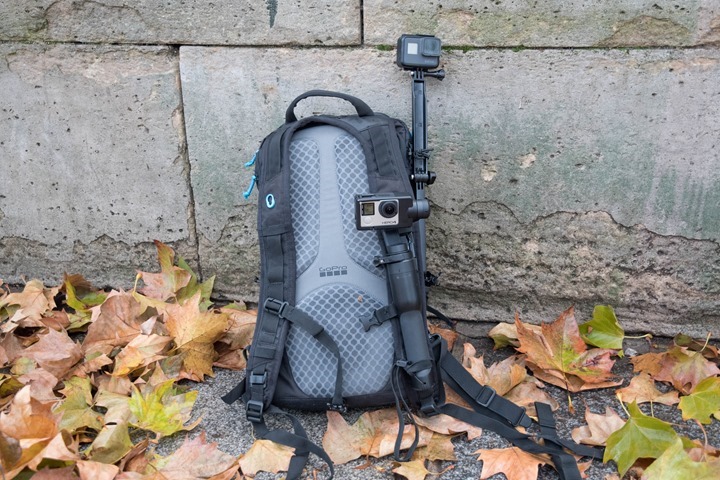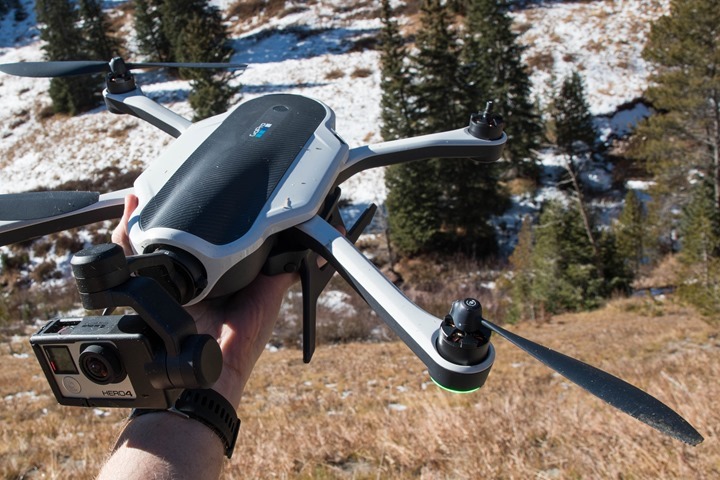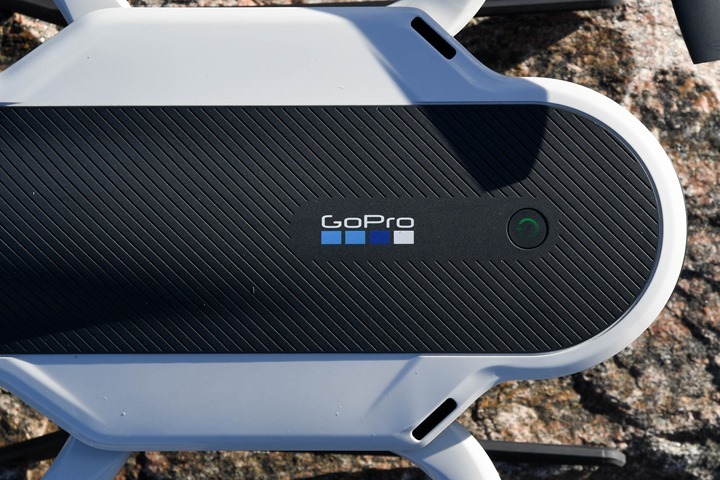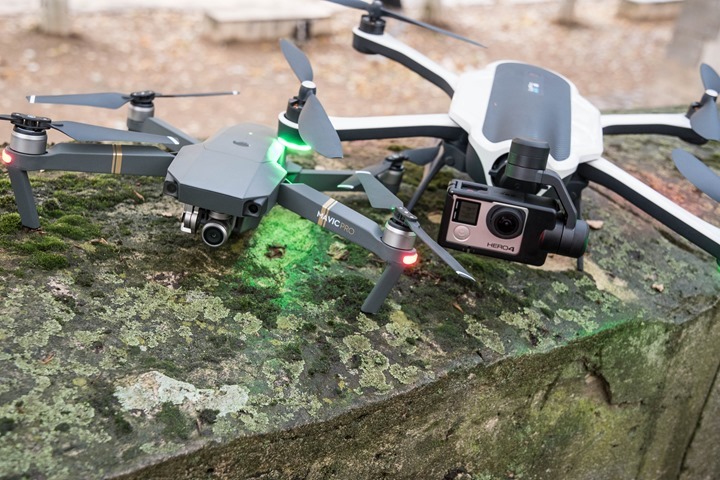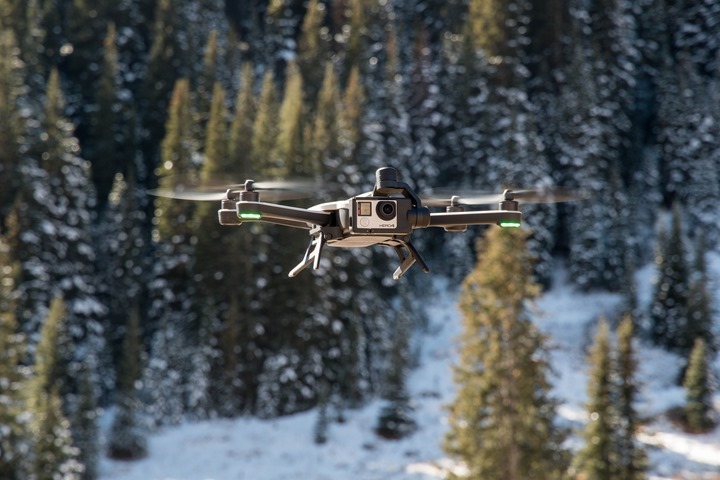(Preemptive Note: GoPro just recalled the Karma drone, due to them falling out of the sky upon power loss. It appears the issue is a battery connector that can come lose mid-flight, causing the loss of power. Luckily, that didn’t happen to me. Of course, I put this entire review together largely prior to said recall. Given GoPro does plan to resume shipments as soon as they solve said power issue, I don’t see any change in what this review covers. If/when they resume shipments and there’s any notable changes, I’ll be sure to update accordingly. In the meantime, enjoy a bunch of pretty pictures and videos.)
When it comes to products from major players in the sports technology landscape, there was probably no more widely hyped and awaited launch in the last few years than GoPro’s Karma drone. One must remember that prior to mid-September, relatively little was known about its features or capabilities. There were many guesses, and a handful of leaks – but by and large secrecy was kept intact.
The drone’s arrival had been delayed at least once along its journey, and was in part responsible for investor concerns about GoPro. Of course, the drone game isn’t one owned by GoPro, but rather today owned by DJI. It wasn’t too many years ago that DJI and GoPro worked effectively side by side. You’d buy a GoPro and mount it to your DJI Phantom. But those days are long gone, with DJI moving to their own camera platform. GoPro turned to 3DR for partnership, but that fizzled with Solo.
When Karma launched, CEO Nick Woodman proclaimed (or rather yelled) on stage that Karma was “so much more than a drone”. And until 7 days later when the DJI Mavic was announced, it did indeed seem that on the surface, that was the case. But is that really the case now, more than a month later with the Karma drone actually shipping?
So if we temporarily set aside (for just a few minutes) the DJI Mavic– how does Karma do as “so much more than a drone”? Is it worth your cash? Well, I put my cash on the line to find out. I bought a unit (actually, a bunch of units) and set out to find the good, the bad, and the ugly. And of course, to see how it compares to DJI’s Mavic product, the nearest competitor.
With that – let’s dig into it.
Unboxing:
The Karma system is unique in that it comes not just in a box, but in an entire backpack. So not only do you get a drone, but everyone gets a backpack to go along with it.
In this case, when I got my Karma drone, I decided to do an unboxing video. Thus, instead of a full secondary set of photos for unboxing Karma, I’ve got one consolidated video:
That said, in order to give those that don’t want to watch the video a look at what’s inside, let’s talk about the core pieces separately. First is the backpack itself:
Then inside that we’ll find the drone:
The removable battery, which I’ve found takes about 75 minutes to charge from empty to full, and gets about 13-16 minutes of actual flying time:
The clamshell controller, which gets about 4-5 flights worth of flying time before needing a recharge:
Then we’ve got the Karma Grip, which connects to the gimbal that you can remove from the drone:
Finally, we’ve got a baggie of accessories, including the frame for the camera, the Karma ring, which attaches to the gimbal for use with the backpack (more on that in the Karma Gimbal/Grip section), and then some tethers:
Don’t worry, I’ll go through all of this throughout the post in more detail.
Size & Weight Comparisons:
So how does it stand-up when it comes to size and weight? First up, here’s the weight of Karma, with a battery and camera/gimbal attached (1941g/4.27lbs):
Then we’ve got the controller’s weight (626g/1.38lbs):
Or the whole thing:
To compare that to Mavic and Airdog, here’s how those look from a weight standpoint, each with one battery and the controller. DJI Mavic up first:
So as you can see above, the total weight of Mavic (1055g) is less than half that of the GoPro Karma (2529g).
And then the Airdog:
Even Airdog with everything is less than Karma – at 2135g. It’s really the Karma controller that’s the beast.
Then to compare sizes, here’s the folded up sizes of the Karma and Mavic:
Obviously, Mavic is smallest, and Airdog and Karma are kinda similar in size. With Airdog you have to remove all props for transport, whereas with Karma you don’t have to remove any for use in the provided backpack (you can use the other GoPro Seeker backpack also, in which case you have to remove two props). With Mavic, the props fold-up, no removal required.
The Basics:
So now that we’ve given it a proper weigh-in, let’s dive into using it. First up, you’ll have it chilling in its backpack, which enables you to keep all four props on during transit.
The drone has two different props on it: Two black, and two silver. They are color coded to match the caps at the end of the arms, making them easy to differentiate when putting them on.
If you haven’t yet, you’ll go ahead and remove the drone and the remote control, following which you’ll unfold the four prop arms outwards. It only takes a moment.
What doesn’t take a moment is the controller booting up. That does take about 30-45 seconds to complete. In general, the drone will find GPS and be ready to go well ahead of the controller. Speaking of the controller – you will need to do some initial setup with WiFi access. I repeat: You cannot fly Karma the first time unless you connect to WiFi at least once. That WiFi is used to double-check for critical initial updates:
For me, the first update process took about 10-15 minutes all-in for the different components, including the camera, to update. The secondary piece you’ll need a WiFi network for is configuring maps on the controller. There is no companion app for Karma to do this, rather, you first connect to your WiFi network:
Then, you’ll go ahead and zoom to the location where you plan to fly. You can zoom in/out and create a few square mile map. Once you’ve selected your area, you can hit download:
I was able to create a number of map areas, though it’s not clear what the specific limit is in terms of map areas downloaded, or size of maps.
Note that this is quite different than DJI, where your phone uses cellular service to download maps on the fly. Ideally, GoPro would allow pairing to the phone to be able to do that as well, in which case it’d have a superior solution. Otherwise, right now it’s a subpar solution because if I go into the mountains, I need to know the exact spot I plan to fly to have maps downloaded ahead of time.
With all that completed, we’re back outside at the home screen, ready to swipe up to fly Karma, or head into the settings/options menu. The settings menus are pretty self-explanatory, so I’m just going to give you a small gallery of screenshots there.
I do want to note above that you’ll see the option to dive into the media on the card, and look at photos and videos taken with the camera. It works mostly, but it’s super slow, and sometimes certain videos don’t enumerate.
Also of note is that with the controller there’s a software simulator that allows you to practice flying the drone.
Instead, we’ll move onto flying it. So we’ll swipe up to have it connect to the drone and show the camera image.
At this point we’ll see the view from the camera, as well as battery and general status information up top. You can hit the camera icon in the lower right to change settings (which I’ll discuss in the dedicated camera section in this review).
Before you take-off, it should be noted that GoPro has a downloaded database of restricted flight zones. This database is actually done aside from the downloaded maps. So even if you’re in an area without maps downloaded, you can still see the restricted zones.
There are two levels of restricted zones. First are those in the red circles, which is within a mile of a major airport, while those in the yellow circles are those within 5 miles of various air things. I say ‘things’, because it can literally be as simple as a helipad (as was the case below). You can dig more into the rules of your country (the FAA in this case), for how to be in compliance of those rules. In a nutshell, you can’t fly in the red zone, but can with certain precautions in the yellow zone.
Before you take-off though, it will ask you to confirm you’ve done so:
And also while flying it’ll show you ‘RESTRICTED’ text along the top of the screen in the battery zone, as a reminder of your current restricted area status.
With that out of the way, let’s fly. To do so you’ll simply hold the Start/Stop button down for three seconds and the unit will count-down audibly, at which point the motors will spin up. From there it’ll still be on the ground, and you’ve got a few seconds to either take-off manually, or to tap the screen to take-off automatically.
Once it’s up in the air you can use the controls to move the drone up/down. The left joystick controls elevation and direction, while the right joystick controls forward/back/side movements. These controls mirror that of DJI and many other drone makers.
You can also press the ‘Landing’ button at any time, which will then give you two landing options: Return to Takeoff, or Return to You. That’s because you may have moved from where you took-off, and don’t want it to land there (such as if you skied down a hill).
On the back left of the control is the gimbal wheel. This enables you to control the camera’s position (up/down). Note that you cannot control the camera left/right, but rather simply change the direction of the drone.
On the back right side of the controller is the start/stop recording button, as well as the highlight tag button. This simply will turn on/off recording based on the modes you’ve set it for. I do wish that GoPro would put up a quick warning right after you take-off, if you forget to start recording (identical to what many GPS watches do, if you forget to start recording and it detects movement). The recording counter at the bottom of the screen can easily be missed.
Next, you can also pair a secondary phone to Karma to display the camera controls. That app is called ‘Passenger’, and is available for iOS and Android. So your friend can download the app and then you can allow them to connect to the Karma remote’s WiFi network.
Once that’s done, you can then grant them control over the camera (tapping that little camera icon next to my phones name), which let’s that person control the recording state, settings, and gimbal on the camera. It’s actually a pretty sweet little setup.
And this is really probably the singular area where GoPro does something better than DJI, which lacks such an option with their Phantom or Mavic series. Note that with Passenger, the app cannot control Auto Shot modes, only manual camera controls.
Now in a later section I’ll talk about performance and general flight behaviors, so this section is about the basics. With that in mind, when it comes to landing (the battery lasts 13-16 mins), you can either press the return to home button or you can land it manually.
When you press return to home, it’ll ask whether you want to return to your current position or the take-off position.
At which point it’ll show you status of the flight getting back to you.
When it lands, it does so with a bit of a thud. Since there are no downward sensors (unlike DJI products), it doesn’t really know how close the ground is. So it pretty much just thunks into it in the least graceful manner possible. You really need to focus on taking off on truly flat and clean ground if you automatically land. I’ve been largely doing manual landings, because I’ve found the GPS isn’t good enough on the unit to properly land exactly where I took off.
With that, I’ve covered all the basics, let’s dive into more of the detailed aspects of Karma.
Video & Photo Modes:
Karma is in a somewhat unique position when it comes to talking about video and photo modes, versus something like the Mavic. That’s because with Mavic you get the camera that DJI put on it, versus with GoPro you get the camera you’ve put on it (or bought bundled with it).
In the case of Karma, there are four compatible cameras fully with it:
– GoPro Hero5 Black
– GoPro Hero4 Black
– GoPro Hero4 Silver
– GoPro Hero5 Session (compatibility planned for 2017)
However, Karma is actually compatible with any Hero3 variant as well, it’s just that you won’t be able to control it. For that setup you’ll need the Hero4 gimbal ‘shell’ ($29USD), and then you’re good to go. Except that GoPro hasn’t released any firmware update for either the Hero3 or Hero3+ to make that happen (and has no plans to). So this means you won’t get any preview while flying, nor will you be able to control recording state/modes while flying. However, you can still control the gimbal.
Further, the Hero4 Session will *not* be supported. This is simply because the Hero4 session doesn’t have a removable door, and said door while open gets in the way of the gimbal. Whereas the Hero5 Session does have a removable door, allowing the gimbal to close around it.
With those compatibility logistics out of the way, let’s focus primarily on the Hero4 and Hero5 Black editions. Why? Well, they’re virtually identical when it comes to specs. Plus, I’ve already reviewed both cameras separately, the Hero4 Black review here, and the Hero5 Black review here. Further, the Hero5 Session camera mount isn’t yet available for Karma.
What’s not well known is that the Hero4 cameras both received an update a few weeks ago to add Karma compatibility, and just prior to that they actually both received an update adding in the new Linear mode – which removes the fisheye effect. The reason for this is likely to compete with DJI better when it comes to a non-fisheye image. The downside though is that with GoPro, you can’t do Linear mode in 4K, but rather only from 2.7K and below. Whereas the Mavic and Phantom 3/4 can do 4K without a fisheye effect.
When it comes to camera settings, those can all be adjusted from the air via the camera settings menu. To access that, you’ll just tap that little camera icon in the lower right corner:
Once there you’ll see a listing of all the GoPro camera modes for your camera. This is true of both video and photo modes, which are changed by toggling the top option.
You can swipe down to change to different resolutions, or enable features such as ProTune.
I do wish I could assign the ‘Highlight’ button to another function, specifically, taking a photo. Meaning, I don’t tend to Highlight too much stuff in the air. In large part because I’m not usually editing with GoPro apps, but rather apps like Final Cut Pro, Adobe Premier, and so-on. None of these support highlight tags. However, I often want to quickly swap between taking a photo and a video, and this requires a lot of going into menus and changing settings to do so.
So what about quality?
Well, it’s already well established that the Hero4 & Hero5 Black units shoot great video, and photos. Though, one thing that hurts you a bit with Karma is the poor GPS/positioning options – which can limit your low-light shooting a smidge compared to DJI. But I doubt that’s going to be a differentiator for most, since the vast majority of us aren’t usually shooting scenes that require absolute stillness at dark (an example being shooting a long exposure photo down at night over a city).
When it comes to being able to do video with more detail behind it, both Karma and the Mavic support variants of LOG modes. With GoPro, you’re shooting in ProTune, and can assign color profiles as well as tweak options like exposure, white balance, color, and shutter speed.
I’ve put together this short montage of shots I’ve taken with Karma and the Hero4 Black while in the air. Nothing super fancy, just a string of random and mostly interesting and/or pretty shots:
For the most part, I do more videos with Karma than photos, as I tend to just shoot in 4K and then pull a photo out of that afterward if I need it for social media/etc… That obviously results in a lower resolution photo, but that’s OK for most of the time. When I want a higher resolution photo, I’ll switch specifically into that mode. Still, here’s a shot I did at one point in between other videos.
Finally, I know there’s been plenty of discussion on whether GoPro has a better camera setup than the Mavic, or vice versa. Many people have seen early footage where Mavic isn’t focused properly (a stupid UI design decision by DJI, by the way) – so be sure you’re comparing apples to apples. In my opinion, I just don’t see much difference between the two of them, in either base recording modes or higher end log modes. We’ve seen people able to create mind-bogglingly amazing videos with both cameras, and in many ways I tend to think that for the camera itself, it’s largely a wash.
What matters far more than the camera in this case is the flying part – which the remainder of my sections in this review cover. After all, you’re buying a drone – not just a camera.
Auto Shot Paths:
The GoPro Karma has four automatic shooting modes, which enables the drone to do all the hard work when it comes to getting the perfect cinematic shot and/or positioning. These modes can be great for making beautiful shots that would otherwise require much more piloting (or shooting) skill. Note that these modes are common-place on drones these days, so none of what we see here is out of the norm. In fact, by all objective measures, GoPro has the least number of autonomous shooting modes. And they lack autonomous follow-me modes, but more on that in a later section.
Here’s a run-through of the four modes.
Orbit: In this mode, the drone will orbit around a set point. To set it up you’ll start by flying directly above the point you want to orbit around. Then on the controller you’ll tap to set that point. Next, you’ll fly to the radius around that point. In other words, just back up 10-15 meters. Then mark that point. Then simply hit start. At this point Karma will fly around the object forever.
You can adjust the speed along a slider, as well as then adjust the height and radius distance using the controls. This means that you can keep the drone circling around that tree, while increasing or decreasing elevation. The drone will automatically keep pointing both the camera and gimbal angle at that tree. Further, you can then increase the distance to the tree by using the other stick, allowing you to create a spiral effect.
Dronie: This mode allows you to take a selfie where the drone zooms out and away from you. So the picture starts up close, and then the drone flies upwards and outwards away from you, keeping you in the picture. You can control the speed during it. Afterwards, it’ll reverse course along the same path back to the starting position.
The challenge I’ve found on numerous occasions with this is that it’s hyper-sensitive to movement of the controller. While the unit will give you a 3-second count-down, if you try and place that controller out of view during that three second count-down I’ve seen cases where it’ll change orientation of the drone camera – thus defeating the purpose of the dronie. You can see this in my video within the ‘Backpacks’ section where I tried to setup a dronie, only to have it fail numerous times. Still, when it works, it makes for a nice Instagrammable shot.
Reveal: In the reveal, Karma will fly towards a point and slowly rotate the camera gimbal up to the horizon. You’ve likely seen this shot countless times at the start of a movie where the camera is pointed down towards the ocean, and then pans up to show the skyline of a city ahead of it, as the craft continues to fly towards it.
It’s a great opening shot in a video, and it’s also handy to use in snippets of videos as well. You can see it within this little Instagram video I put together using GoPro’s Quik app to automatically edit it to music, as the opening shot.
Cable Cam: This modes allows you to set two points in the sky and then have the drone fly back and forth between those points over and over again. You’ll start by flying to Point A, and then setting it. After which, you’ll fly to Point B and set that. You cannot do any more points beyond two points. After which, you’ll press start.
Karma will then go back and forth along this imaginary highway. By default it’ll also remember any elevation changes you’ve set between the two points. Thus you can get smooth elevation increases this way. While the drone is going back and forth, you can then control the camera angle. Not just the gimbal, but the orientation of the camera. The drone takes care of flying, while you just focus on the camera. You can also adjust speed as well as height at any time.
The fact that it goes back and forth is super useful, but as you can see in my bike video about this, the lack of range often causes problems here.
Note first though that the four modes I’ve covered are the *only* modes at this time available to Karma from an autonomous standpoint. Again, there is no follow-me modes at this time (nor has GoPro announced any).
Finally, note that when you close the clamshell, it immediately ceases any auto-shot modes. The drone will instantly stop and hover. This really sucks, because that’s kinda-sorta the point of the clamshell remote – to be able to close it up and not have it dork with the controls. So I had wanted to get in the shot and take the control with me on the bike, but alas, I can’t do that.
As you saw in that video above though, there were a few stumbles with stability. So let’s dive into what those were in the next section.
Performance & Stability:
Without question, the biggest challenges for Karma come in the performance and stability departments. And in this way, this is actually one of the most challenging pieces too – because it’s the difference between whether your drone crashes. A drone that can’t hold it’s place properly, or doesn’t react properly is far more likely to crash.
In general, I look at this category in terms of:
Performance: Areas such as range, speed, handling, responsiveness, and battery duration
Stability: Whether or not the unit can stay where you put it, and how it handles in tighter quarters (near trees)
Both are super important. If range is significantly reduced, you’ll be limited in your filming. And I’m not talking about going crazy (potentially illegal depending on your country) distances. I’m talking reasonable distances where you can still see the drone (again, as required by many drone laws). So let’s start there.
The Karma has an advertised range of 3,000m (9,842ft). This is the distance it can go from your controller. This is different than the distance in height above you, as well as different than the maximum operating altitude. The height on Karma is by default limited to 400ft, whereas the maximum operating altitude is 10,500ft (3200m). I was able to test the unit successfully at ~9,500ft (2900m), just below that 10,500ft limit. No issues in either realm.
However, where I’ve found significant issues is around the range piece (again, advertised as 9,842ft). In this area, Karma woefully fails. On all but one flight, I’d get range/disconnection warnings at about 400ft-500ft in range, even as low as 120ft away. When Karma disconnects from the remote (for any reason) it’ll automatically turn around and start to return to home (RTH). Along the way if it reconnects, you can cancel the RTH and continue flying, which is what I did each time.
However, only one time was I able to go further – to about 2,000ft before I turned back to keep it within legal visual sight limits. But that was the only time, I had numerous (far too numerous to count) cases where range dropped out in as little distance at 150ft from the controller (across a wide open field). You can see that in one of the videos below (the bike/control tower one). The secondary issues with range though is that as you get further from Karma, the video quality degrades – so much so to the point it becomes impossible to see what you’re filming. So even when I had signal at 400ft, it was crap – making the controller useless.
Next we have speed. In this case, GoPro advertises a 35MPH limit (56KPH). And indeed, I was able to achieve that. However, what isn’t obvious is that in order to exceed 18-19MPH, you need to disable ‘Easy Mode’, which can be found on the controller:
Once you do that, you’ll get a much more reactive drone in terms of controls (and speed). For those familiar with drones, this mode puts it roughly on par with how the DJI Phantom series reacts in regular mode, but nowhere near as fast as the Sport Mode found on the DJI series. Not that it matters for 99% of people (including myself), to be honest. You can see the top-speed below at 34MPH, once ‘Easy Mode’ is disabled.
So what about stability? If there’s one area that might be the shot to the heart on Karma, it’s actually stability. In this case I’m looking at how well the unit can hold its place, primarily closer to the ground. It’s easy for a drone to appear to be stable when it’s 150ft in the air and essentially filming the horizon. A meter here or there doesn’t mean anything.
But at 1m off the ground in between trees – that meter will make the difference between crashing or not. And in the case of Karma, it just doesn’t have good accuracy. As you can see in the below video, it floats around aimlessly. This is because unlike recent DJI drones (or the Airdog), it doesn’t have any downwards facing optical sensors. This means that it needs to rely 100% on GPS, which simply isn’t accurate enough to get within a foot or two. Whereas DJI uses these optical sensors to effectively lock onto the ground.
Here’s a simple hover test of the two side by side, note how the Phantom 4 (which is identical to Mavic in this sense) stays rock solid:
But it actually gets worse. See, in addition to GPS, the drone (like most units) will use a barometric altimeter to track altitude. Unfortunately, the Karma’s isn’t very accurate. As a result, it can’t hold elevation properly. You’ll see it drift up and down. Or, in the middle of a shot, it’ll randomly bump down without warning (as you can see in my hiking video).
This behavior is even more pronounced near the ground, where at one point it slammed itself into the ground on me, breaking two props. Breaking props is a fact of life for most drone owners, so that doesn’t so much bother me. It’s the fact that it’s so easy to do that’s frustrating.
So why do you care about being close to the ground or trees? Well, it’s these areas that make for the most interesting shots. If all you shoot is super-high altitude shots of the horizon, people will bore of your videos quickly. One only need to look at GoPro’s own marketing videos, most of which feature shots in tight quarters. Simply put – I have no doubt they broke several drones to get those shots. The drone simply isn’t stable enough otherwise to get those shots. And I don’t think any amount of software updating will fix these issues in any meaningful way. It lacks the hardware required that’s common in modern day drones.
Finally, battery life. In this area GoPro states up to 20 minutes, which is kinda funny because a brand new battery shows only 19 minutes when the controller powers on. But only if 19 minutes is what you got. In reality, with all my flights I’m averaging about 12-16 minutes. Never more. Note battery life is shown as a green count-down timer along the top. And the faster you fly, the quicker it depletes. So for my longer flights, I was relatively still. Whereas my shorter battery times were when I was more active in flying.
As a benchmark for how bad this is, the DJI Phantom 4 and DJI Mavic are closer to 30 minutes of actual flight time. There’s a massive difference in flying battery life between 12 minutes and 30 minutes. That’s literally like having three times the flights. Like most performance related things on Karma, it’s a huge disappointment.
Karma Gimbal and Grip:
Part of the marketed appeal of the GoPro Karma is that it’s more than just a drone. Specifically, it’s a drone that has a removable gimbal to allow you to take the camera/gimbal and attach it to a separate handle (called Karma Grip) that you can use without he drone.
In order to do this, you’ll utilize the lock-ring to unlock the gimbal from Karma the drone, and attach it to the Karma Grip.
Once you’ve done so, you can then lock the Karma Grip itself, ensuring the gimbal stays put:
On the back of the gimbal are four buttons and four LED status lights. These lights state the battery power of the gimbal, which is charged via USB-C cable.
The other four buttons are used to:
Record button: Start/stop video recording, or take a photo
Mode/Power: Change between photo/video modes, or power on/off the gimbal
Highlight button: Set a highlight tag that GoPro apps can use later to identify something exciting
Lock Orientation button: This is used to lock the orientation of the camera.
This last button is notable as it allows you to keep the camera either level to the ground, or set at a specific orientation. This is useful when you may want to film something not level with the horizon, such as a bike computer on your handlebars.
The Grip is designed to be able to clip into the Karma mounting ring, which allows you to then mount it to any GoPro compatible mount location.
And example of this is the front of the Seeker backpack, which even has little elastic straps to keep the bottom portion of the gimbal in place.
All of which is solid, even more so since the gimbal is lightly water resistant – meaning it’ll stand up to rain/snow. However the connectors between the camera and the gimbal are not. Thus it won’t work in the water, and if you have a Hero4, then keep in mind the water resistance there isn’t ideal (whereas the Hero5 is fully waterproofed).
Still, there are some challenge. First is that the gimbal blocks much of the cameras display screen – thus making it harder to see what you’re filming. Second, it lacks a microphone port, which matters to some folks. On the Hero5, I find the onboard audio so good that it’s rarely needed. But lastly, and most importantly – the gimbal often gets out of whack.
Meaning that the gimbal calibration becomes off kilter, and the image starts to tilt. This is usually noticeable within as little as 30 seconds of running. Correcting such tilt in post-production afterwards is a pain in the ass.
You can see some of this within my trail running focused video here, where while running downhill afterwards I used the gimbal to record a talking segment.
Ultimately, the GoPro Gimbal/Grip is an ‘OK’ gimbal. It’s just that there are great gimbals available for half the price, and half the weight. Plus those other gimbals are far more flexible in compatibility.
Athletic Usefulness:
While GoPro as a company has been aligned to athletic endeavors from the start (the original GoPro camera was designed to capture surfing), that simply isn’t the case with Karma. No matter how much spin the company or retailers wants to put on it – Karma isn’t really designed for tracking athletes today. Which isn’t to say it can’t be used to capturing athletic events, because of course it can.
But when you compare automated modes between Karma and many other drones on the market today, Karma simply lacks all of those features. For example, it lacks all of the following:
Follow-Me Mode (Hardware based): In a hardware based follow-me mode, the athlete wears a small tracker that the drone follows. An example of this is Airdog. This is useful when the athlete goes behind an object briefly (i.e. trees, bridge, building, etc…) and the drone needs to still know the position. Additionally, with some hardware trackers, the drone can properly follow changes in altitude. Further, in the case of the Airdog, you can setup pre-planned routes that the drone will always stay on, while keeping the camera pointed at the athlete. It’s kinda like being on railroad tracks, and allows more creative camera shots autonomously. An example of how this looks on the Airdog is below (note the transponder on my upper arm):
Follow-Me Mode (Software based): In this configuration, the drone uses software to recognize a person (or object), and follows that. This is what DJI has implemented with the Phantom 4 and Mavic units. In this case, it’s able to track mostly well in open areas, however if a person goes behind trees for any length of time, the drone will loose tracking and stop/return to home. An example of how this looks on the DJI platform with Active Track is below:
And here’s how these two compare side by side:
Follow-Me Mode (App based): In this configuration, the drone uses apps that may be software or hardware based. Again, DJI has these capabilities today with 3rd party apps. One app in particular, Autopilot by Autoflight Logic, is incredibly deep in terms of even allowing you to simply place a phone on an athlete and track for significantly long periods of time & distance.
Obstacle Avoidance: While not required for tracking athletes, some form of obstacle avoidance is incredibly helpful to minimize significant FUBAR’s. For example, the Airdog has ground avoidance, which in most situations will keep it from hitting the ground if the terrain shifts. While the DJI units have front-facing obstacle avoidance, which will keep it from hitting large objects. Though none of these technologies are perfect. For example, Airdog’s ground avoidance won’t keep it from hitting the side of a cliff (since the sensors only face downwards), and DJI’s avoidance won’t keep it from hinting most leafless tree branches in the winter. An example of how this looks on the DJI platform is below, where the colored bars show me (the red skier) and the distance. When it gets too close, it’ll stop.
So you may be wondering whether or not GoPro can add these features. The answer is…sorta.
GoPro won’t be able to add obstacle avoidance, since they lack any of the sensors internally or externally to do so. It’s a significant omission that many have rightly criticized GoPro for. Ideally they would have at least put the sensors in, and finished the software later. But, that’s not possible now.
For follow-me modes, they could actually implement either hardware or software based fixes. With hardware based, they could easily sell an accessory unit down the road that would allow the person to place the transponder on them, which the Karma could follow.
Whereas with software based, they could add a firmware update to the GoPro camera itself to track people. This of course is more complex, because it involves leveraging some aspect of the GoPro camera platform (either directly or indirectly). Still, the possibility is there. However, GoPro has repeatedly stated that they don’t see any of the follow-me modes as mature enough for the market.
Of course, the market rightly notes that’s a cop-out. It’s simply that GoPro was so far behind schedule on Karma that these features had to get cut. Which is in turn why if you talk to enough GoPro employees, you’ll eventually find some that seem to hint things are on the way, just not immediately.
Finally, GoPro has made no mention of any sort of API/dev platform for Karma. While they do have a dev platform for the GoPro cameras itself, it’s not widely used. This is in part because every 3rd party company I talk to regarding the platform (that actually has access to it) does little more than groan when they discuss it. Their displeasure with both the platform itself, as well as how GoPro is able to support it is abundantly clear. Until something changes there, I don’t expect to see many GoPro software integrations with 3rd party products.
The Backpacks:
Before we start wrapping things up, note that GoPro actually makes two backpacks for Karma. The first is the one that came with your Karma drone, that’s the somewhat hard shell design, seen to the right.:
But the second is one they released this summer, called the ‘Seeker’, seen on the left. That backpack is small and lightweight, and actually fits Karma into it. You’ll have to remove the front two props, but that only takes a second.
The bag will fit the drone, the controller, more props than you know what to do with, and even an two *extra* batteries if you get creative on it (total of three batteries). Plus you can store more GoPro’s and junk in the upper compartments. There’s a few different ways you can arrange stuff inside, depending on whether you take extra batteries (or if you put the Karma Grip outside the backpack).
On the front of the backpack is a mount for the GoPro Karma grip, so you can lock it into place there too:
And on the sides the system is designed to hold the GoPro 3-Way Pole, which is my favorite accessory:
Inside there’s room to add a hydration bladder/kit, though annoyingly GoPro decided to not include one – despite the pack selling for $169. Seriously. So I added my own from Amazon for $25.
So what are the downsides to the bag? Well, it’s a good day-use bag, but not a great back for much more than that. Meaning, if you’re packing a lot, this bag doesn’t actually hold much. You wouldn’t be able to pack a lunch in there with the drone, if you went on a hike. At least, not much of a lunch. You might be able to squish a Chipotle burrito into the bag, but I wouldn’t want to see what it looked like a few hours later.
Second, the zippers are a solid pain in the ass. They constantly catch on my bag, and separate. I’ve had the bag since I bought it this summer, and while I’ve used it a bunch – I’ve often just wished I brought my cheaper $89 REI backpack instead (which, btw, will easily fit Karma too and snugly in a protector). I’ve used that on virtually all my trips to hold/store all my drones while skiing/cycling/hiking/etc…
Still, if you want something that’s well padded and snug to Karma, this does fit the bill. Further, the additional GoPro mounts on both the chest and shoulder harness are nice, as is the spot for the 3-way pole (that you also have to buy extra).
Accessories and Repairs:
Note though that at this time the biggest challenge for Karma is lack of availability of parts. Quite simply, you can’t buy any parts for Karma right now. Not even extra batteries or props. While I’m sure GoPro Care/Support would take care of you with extra props, it just sucks travelling and not having props handy. If I’m going on some adventure trip, it’s highly unlikely that GoPro is going to be able to get me new props in time in a crazy (but cool) location. It’s a core reason why virtually all drone owners travel with 1-2 sets of extra props.
That said, Karma is designed to be relatively user serviceable with minimal experience swapping things out. That’s why they sell the extra arms on their site, as well as virtually all the major parts. And by ‘sell’, I mean, eventually sell. At the time of this writing the only thing you can purchase is extra props. That’s it.
One area that is unique with GoPro though is their GoPro Care offering, which will take care of you when you smash Karma into your neighbors garage door while trying it out on your first flight. The main appeal of GoPro Care (which costs $149 to protect Karma, or $199 with the Hero5 Black), is the quick turnaround on parts – and the superior customer service. It’s well known that DJI’s customer service can be ‘a challenge’ to say the least. Whereas GoPro’s is generally quite good and they are usually very helpful.
With GoPro Care, the goal is to get you up and running within a few days. So they’ll do priority shipping options to make that happen, which is cool. I do plan on adding GoPro Care to my Karma drone, simply because it’s almost inevitable that I’ll crash it harder at some point. And note that initial reports on places like Reddit and others for those that have crashed Karma with GoPro Care have had good experiences.
Product Comparison:
Starting with the GoPro Karma, I’ve added a new section to my existing product comparison database. This section is focused on drones, just like I have sections for action cams, trainers, GPS watches, and other product types. Since Karma isn’t the first drone I’ve reviewed, nor will it be the last, I didn’t want to have just one drone in there.
So for now I’ve got the Airdog (that I reviewed here), GoPro Karma (this review), and the DJI Mavic (review next week). If you’re visiting this some time down the road, then you may want to check out the comparison table features, in case I’ve added new trainers to mix and match and create your own comparison tables. You can do that here. But for now, here’s how the three compare:
| Function/Feature | GoPro Karma Drone | DJI Mavic Pro | Airdog |
|---|---|---|---|
| Copyright DC Rainmaker – Updated November 9th, 2016 @ 2:26 pmNew Window Expand table for more results | |||
| Price (non-combo) | $799 ($999 with Hero5 Session, $1,099 Hero5 Black) | $999 | $1,599 |
| Announcement Date | Sept 19th, 2016 | Sept 26th, 2016 | Jun 15th, 2014 |
| Shipping Date | Oct 23rd, 2016 | Oct 21st, 2016 | February 2016 |
| Included | Yes (backpack) | No | No |
| Can store props w/o removal | Yes | Yes | No |
| Weight | 1941g | 739g | 2022g |
| Use only phone as controller | No | Yes | No |
| Controller Waterproof | Rain resistant | No | Yes |
| Secondary controller operator | Yes, via Passenger app (Android/iOS) | No | no |
| Battery | 13-16 mins actual | 25-27mins | 15 mins actual |
Of course, sometimes the tables don’t make it easy to figure out the stand-out differences, as they’re awash in data. So, in the interest of making things easy, here’s the major differences:
GoPro Karma: You can remove the gimbal/camera from drone, use elsewhere and for other purposes. Uses standalone controller that doesn’t kill your phone battery, but can pair phone for secondary camera operator. Includes backpack.
DJI Mavic: Folds up super-small, has more autonomous modes, double battery life of Karma. You use phone with controller, which does burn through phone battery. Doesn’t include backpack…but can fit in oversized pockets.
Airdog: Purely focused on sports action cam filming, 100% autonomously. While you have a ‘controller’, it’s not ideal for general cinematography. But it’s by far the best drone to shoot yourself in sports (vs having a secondary operator).
Again, there are many more details to that, but that’s basically the elevator pitch on each drone, if I was trying to explain it to a friend that asked at a party.
Summary:
GoPro had the ability to release a product that could have dominated the drone landscape. After all, there’s no more familiar brand in action cameras than GoPro. Additionally, there’s no company with greater distribution in action cameras than GoPro. Sure, DJI is available in numerous places online and retail outlets – but nowhere near the extent that GoPro is.
Unfortunately, when it comes to what matters (having a good product), GoPro dropped the ball in almost every way that matters when building a drone. It is not “so much more than a drone”, like CEO Nick Woodman declared. Yes, it has a detachable gimbal – and that piece is cool. But the shortfalls in every drone feature can’t be made up by just adding an ‘ok’ gimbal grip system.
If it were just size when comparing the Karma to Mavic, then one might be able to conjure up reasons why Karma is a better drone. But it’s not just size of aircraft, rather, it’s a host of things that are the foundation of a good drone. The ability for it to stay in place properly, and for it to be connected at even close-range distances are the bedrock of a good system. And Karma fails miserably at those areas. And that’s before we even consider the onslaught of useful features that DJI has that GoPro doesn’t: Obstacle avoidance, autonomous follow-me modes, double the battery life, and…’so much more’.
If I were in GoPro’s shoes, I’d actually look to say that Karma 1 is a loss. Meaning, I wouldn’t bother trying to do international distribution next year with it, as planned. Instead, I’d put all resources on a ‘Karma 2’ for release next spring. That’d roughly match the DJI release cadence of units. Obviously, that’s easier said than done – but as the chorus of similar reviews gets louder and louder, it’s going to take more than software updates to compete. Only new hardware can make it competitive at this point.
With that – thanks for reading!
























